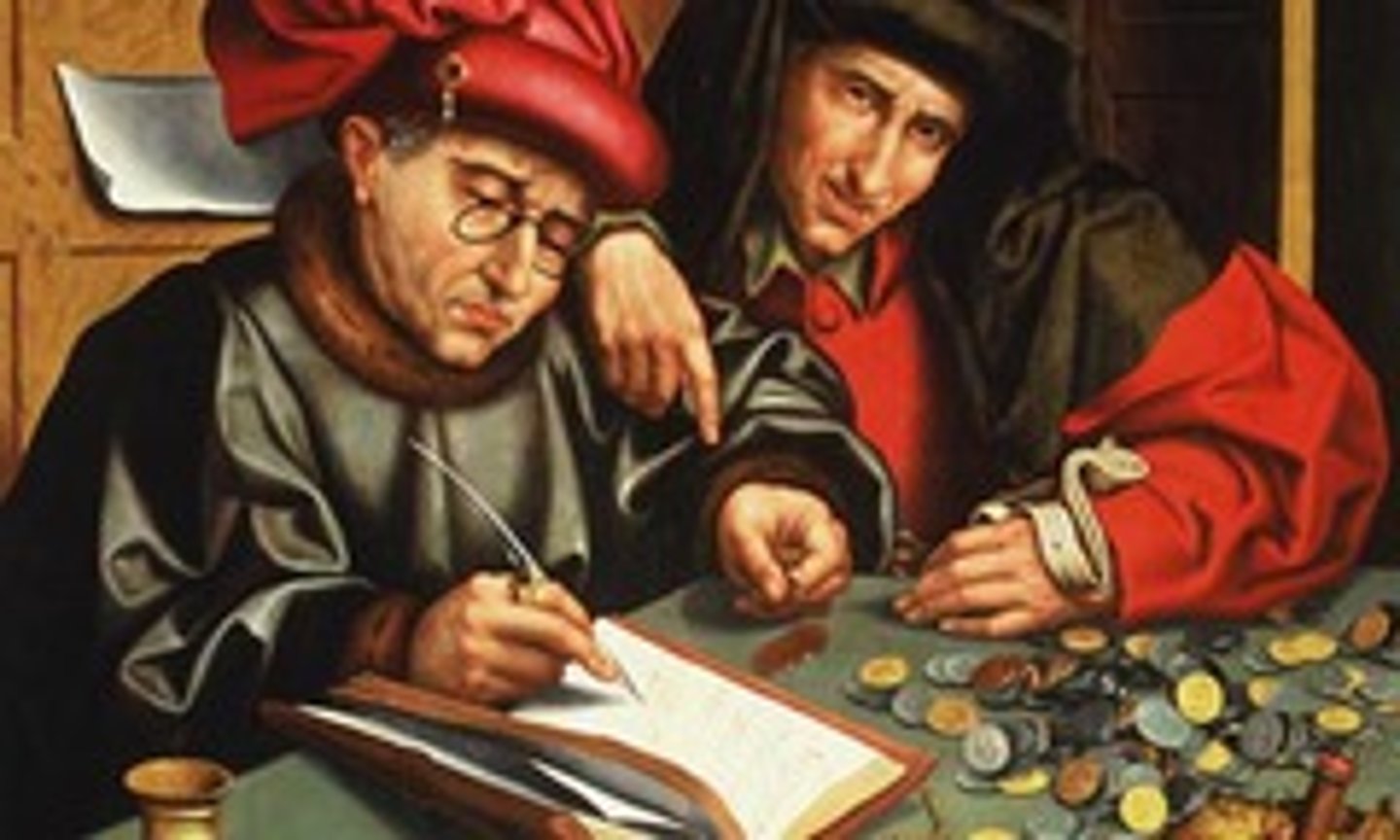AP Euro - Unit 1: Renaissance and Exploration (1450-1648)
1/69
Earn XP
Name | Mastery | Learn | Test | Matching | Spaced |
|---|
No study sessions yet.
70 Terms
Petrarch
(1304-1374) Father of the Renaissance. He believed the first two centuries of the Roman Empire to represent the peak in the development of human civilization.
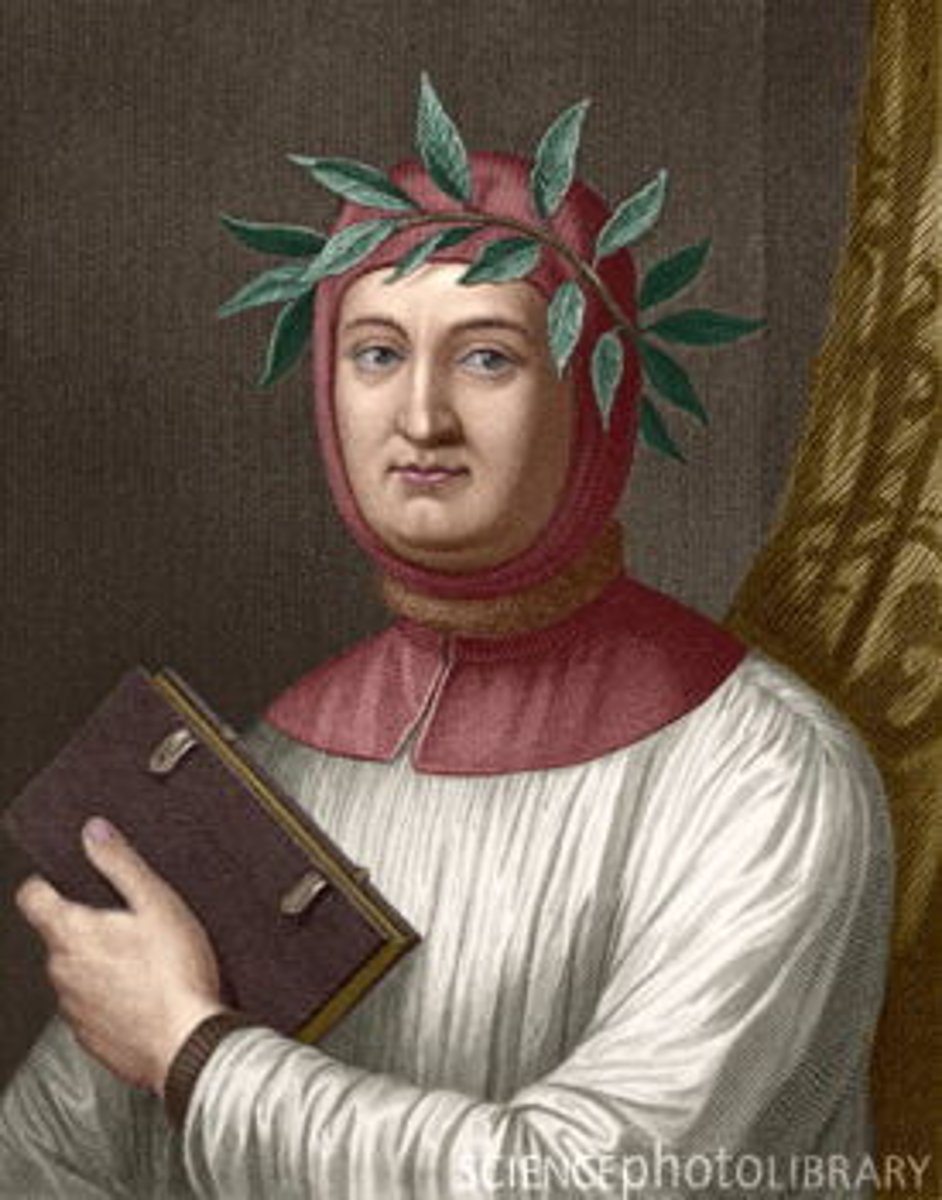
Renaissance
French for "rebirth"; following the Middle Ages, a movement that centered on the revival of interest in the classical learning of Greece and Rome.
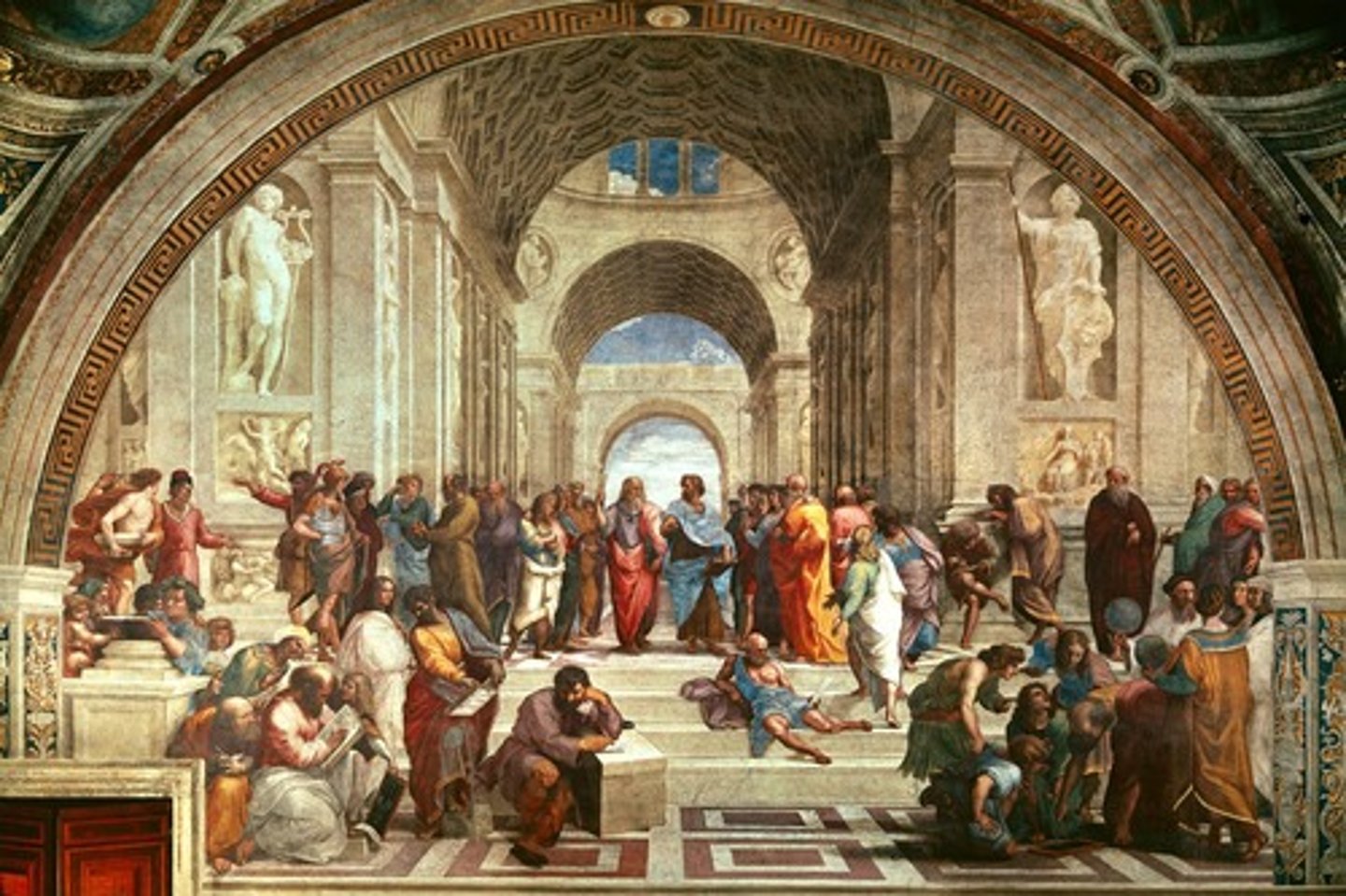
Italian Rennaissance
A period of great cultural change and achievement that began in Italy during the 14th century and lasted until the 16th century, marking the transition between Medieval and Early Modern Europe.
Lorenzo Valla (1407-1457)
A humanist who used historical criticism to discredit an eighth-century document giving the papacy jurisdiction over Western lands.
Patronage
Financial support of writers and artists by cities, groups, and individuals, often to produce specific works or works in specific styles.
Leonardo da Vinci (1452-1519)
A well known Italian Renaissance artist, architect, musician, mathemetician, engineer, and scientist. Known for the Mona Lisa. Exemplary sample of a "Renaissance Man" that reflects humanist ideals.
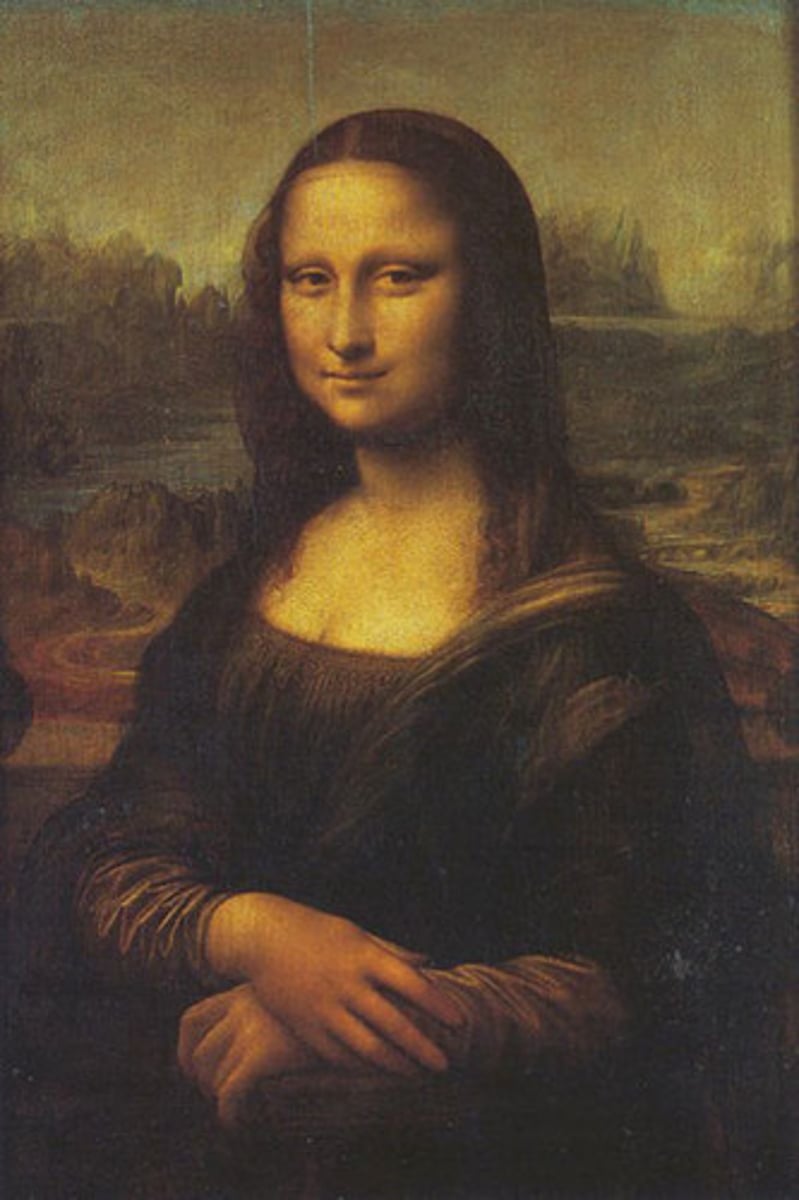
Michelangelo
(1475-1564) An Italian sculptor, painter, poet, engineer, and architect. Famous works include the mural on the ceiling of the Sistine Chapel, and the sculpture of the biblical character David.
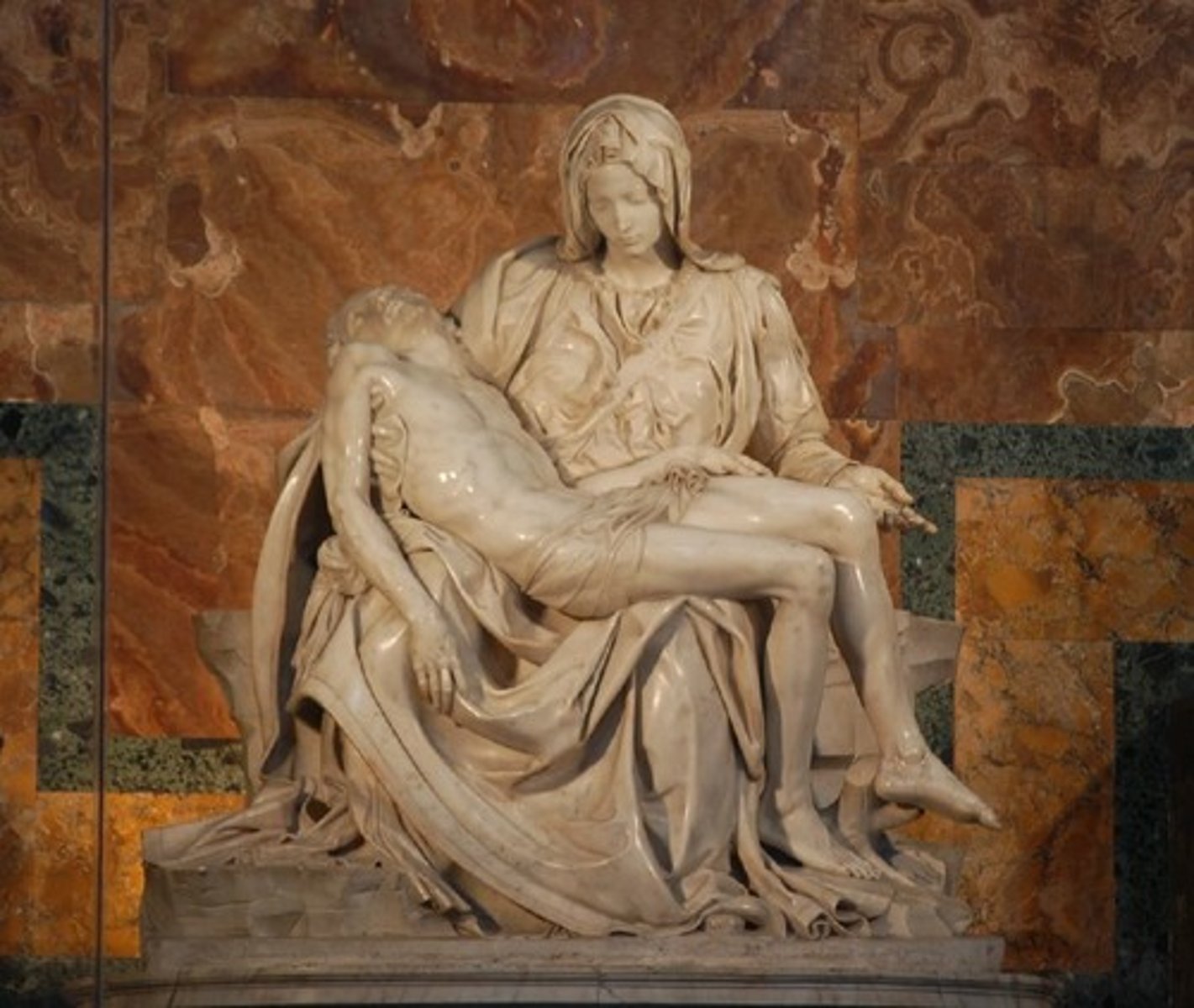
Donatello
(1386-1466) Sculptor. Probably exerted greatest influence of any Florentine artist before Michelangelo. His statues expressed an appreciation of the incredible variety of human nature.
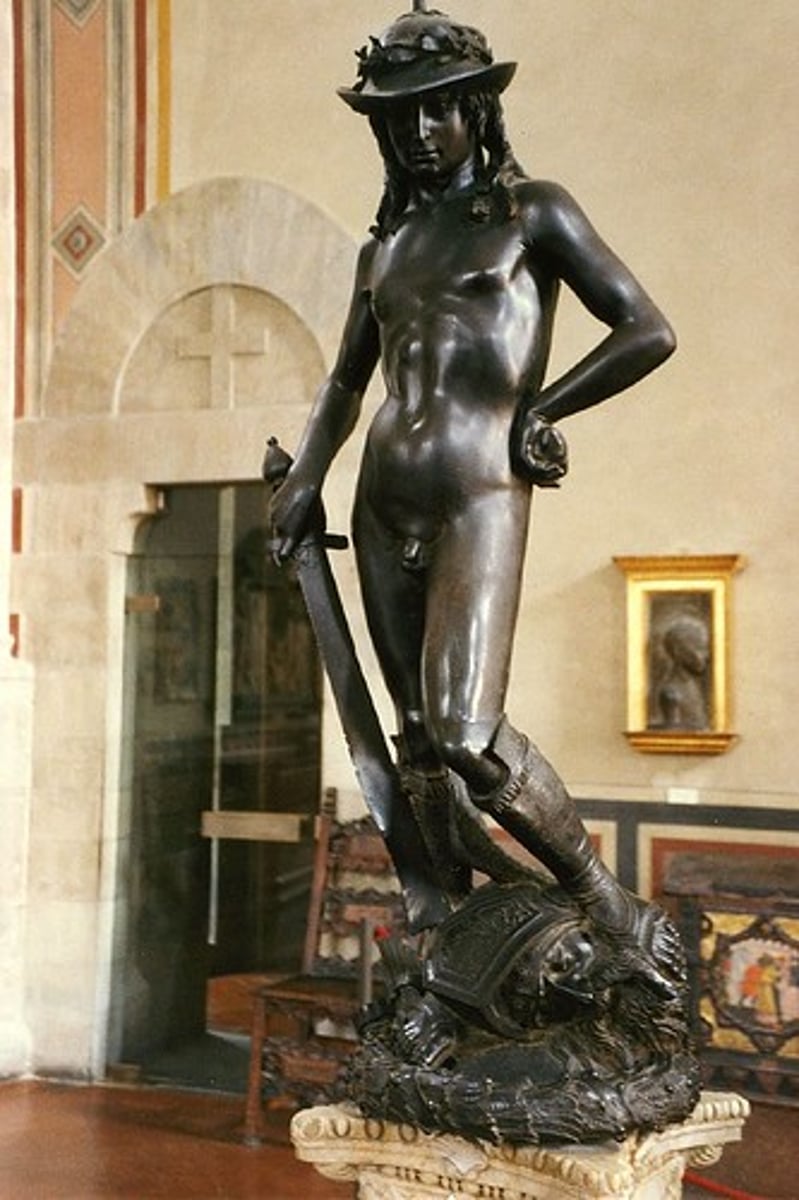
Raphael
(1483-1520) Italian Renaissance painter; he painted frescos, his most famous being The School of Athens.
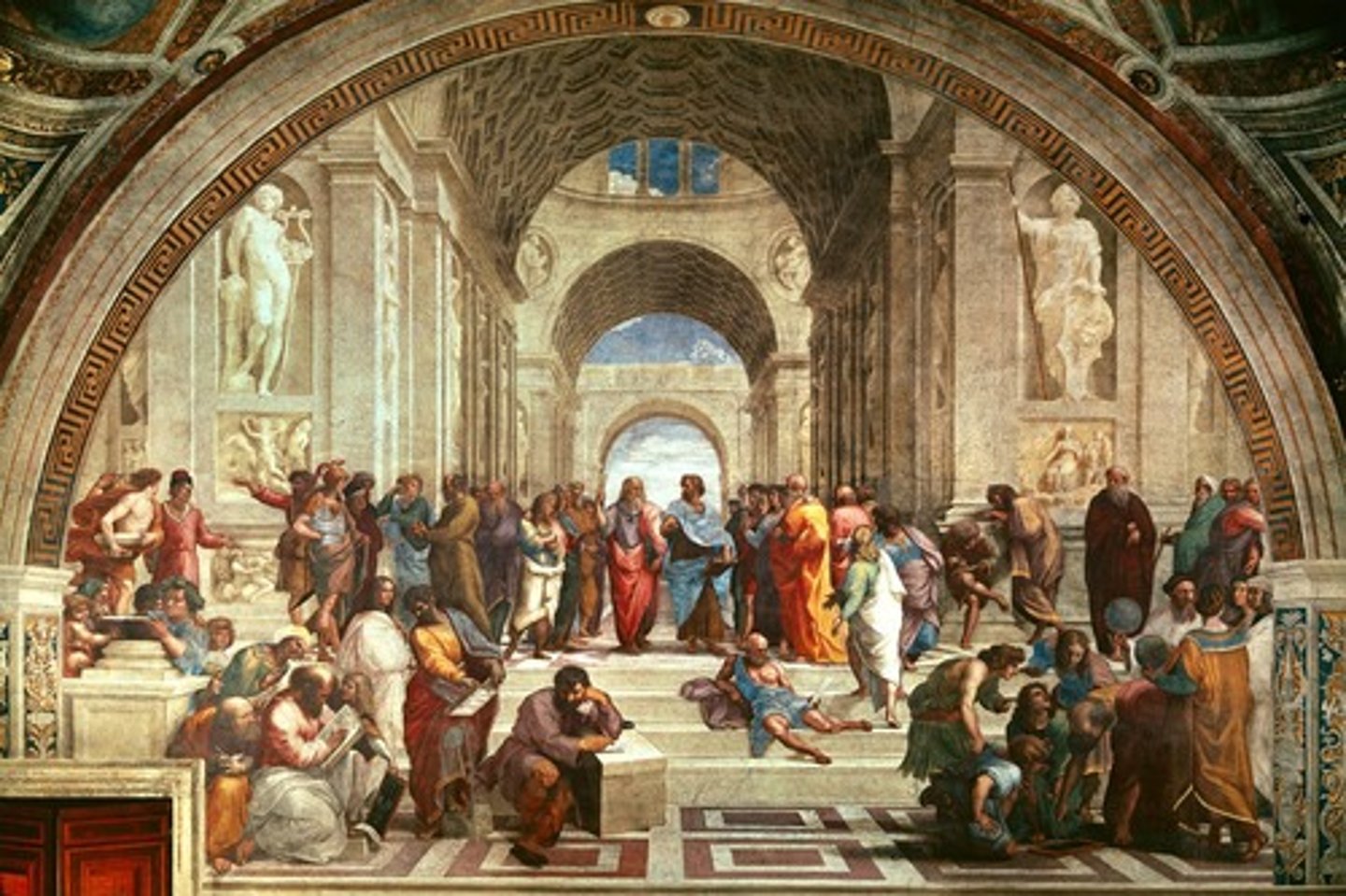
Filippo Brunelleschi
(1377 - 1446) A friend of Donatello, he was a skilled sculptor and goldsmith whose 1401 competition with Lorenzo Ghiberti for the commission of the bronze doors of the Florence Baptistery is a frequent question topic (Ghiberti got the chief commission). As an architect, he is mainly known for the extraordinary octagonally-based dome of the Santa Maria del Fiore (also known as the Florence Cathedral), which dominates the Florentine skyline. The task required an innovative supporting framework and occupied much of his career (as described in detail in Vasari's Lives of the Artists). Other projects include the Spedale degli Innocenti (a hospital), the Old Sacristy at San Lorenzo, and the Pazzi Chapel in the Cloisters of Santa Croce, all from 1421 to 1430.
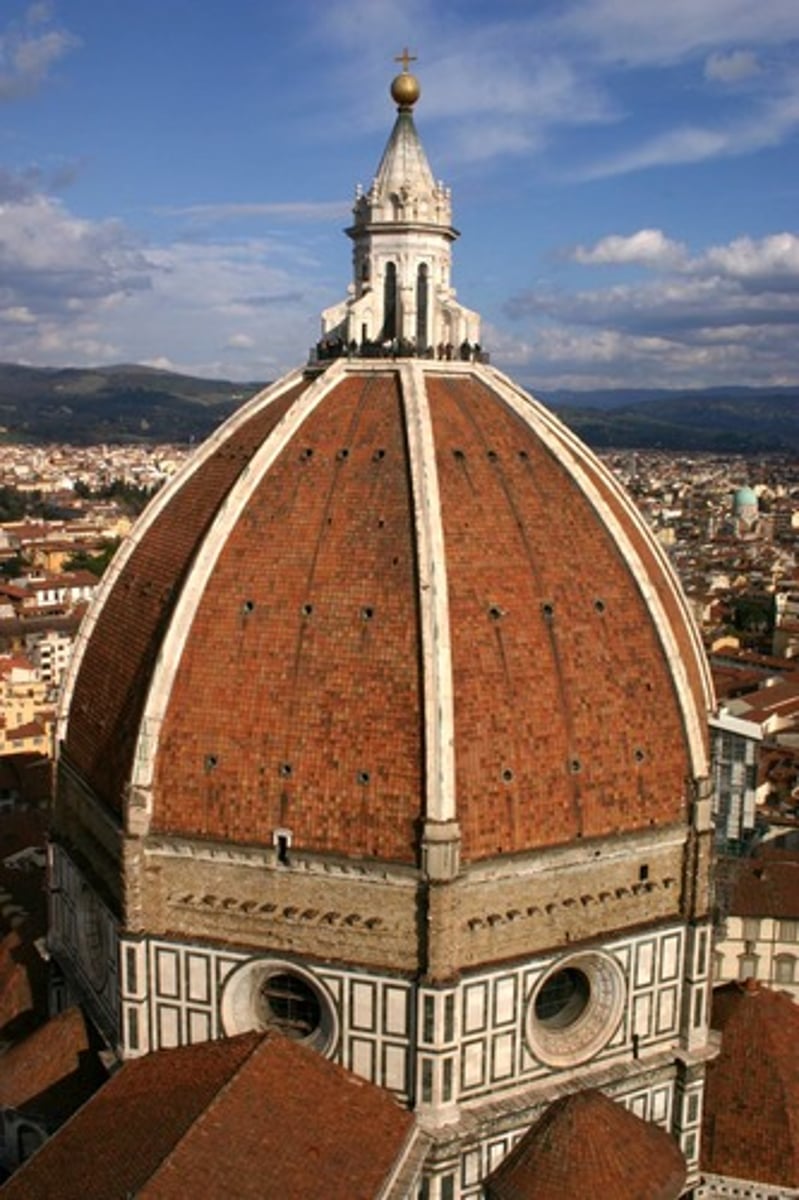
Mannerism
An artistic movement that emerged in Italy in the 1520s and 1530s; it marked the end of the Renaissance by breaking down the principles of balance, harmony, and moderation.
El Greco
Spanish painter (born in Greece) remembered for his religious works characterized by elongated human forms and dramatic use of color (1541-1614)
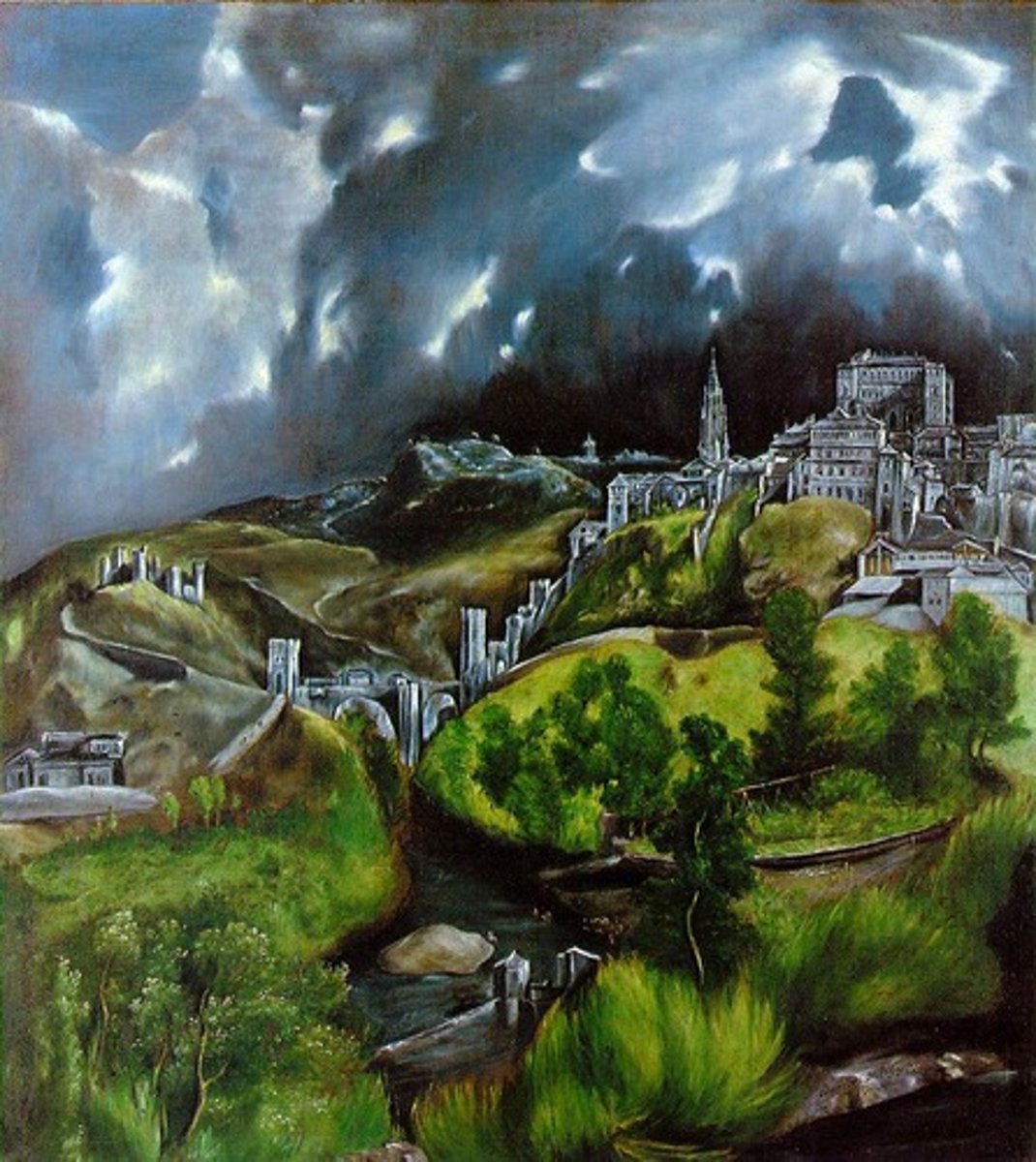
Communes
Sworn associations of free men in Italian cities led by merchant guilds that sought political and economic independence from local nobles.
Popolo
Disenfranchised common people in Italian cities who resented their exclusion from power.
Signori
Government by one-man rule in Italian cities such as Milan; also refers to these rulers.
Courts
Magnificent households and palaces where signori and other rulers lived, conducted business, and supported the arts.
Baldassare Castiglione
An Italian author who wrote the book The Courtier in 1528. He described the ideal Renaissance man and woman.
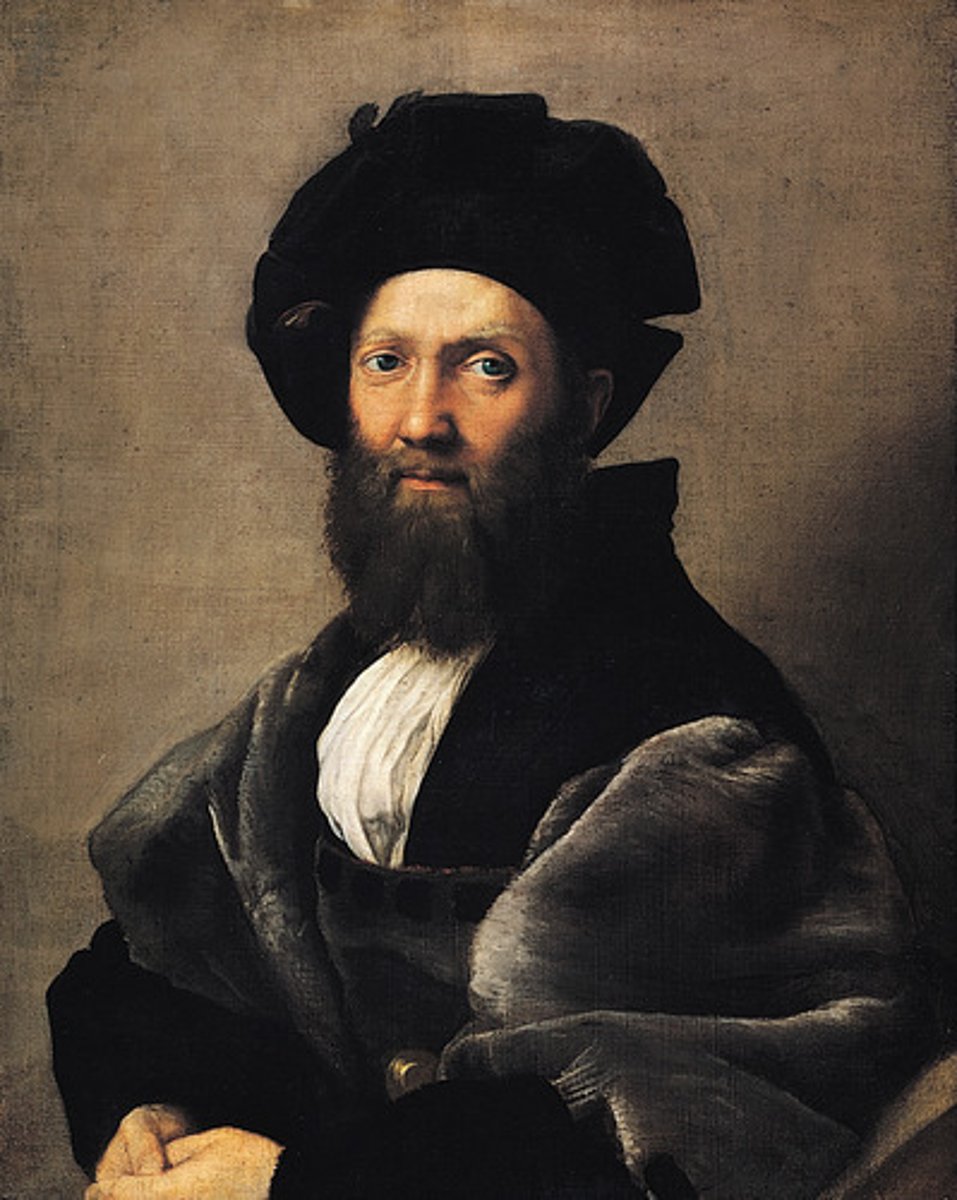
Humanism
A program of study designed by Italians that emphasized the critical study of Latin and Greek literature with the goal of understanding human nature.
Niccolo Machiavelli
(1469-1527) Wrote The Prince which contained a secular method of ruling a country. "End justifies the means."
Civic Humanism
Humanism with the added belief that one must be an active and contributing member to one's society.
Secularism
An indifference to religion and a belief that religion should be excluded from civic affairs and public education.
Christian Humanists
Northern humanists who interpreted Italian ideas about and attitudes toward classical antiquity and humanism in terms of their own religious traditions.
Virtu
The quality of being able to shape the world according to one's own will.
Debate About Women (Renaissance)
Debate among writers and thinkers in the Renaissance about women's qualities and proper role in society.
New Christians
A term for Jews and Muslims in the Iberian Peninsula who accepted Christianity; in many cases they included Christians whose families had converted centuries earlier.
Northern Renaissance
An extension of the Italian Renaissance to the nations Germany, Flanders, France, and England; it took on a more religious nature than the Italian Renaissance.
Desiderius Erasmus (1466-1536)
1. Northern humanist who wrote "In Praise of Folly"
2. Wrote in Latin while most humanists wrote in the vernacular
3. Wanted to reform the Catholic Church, not destroy it
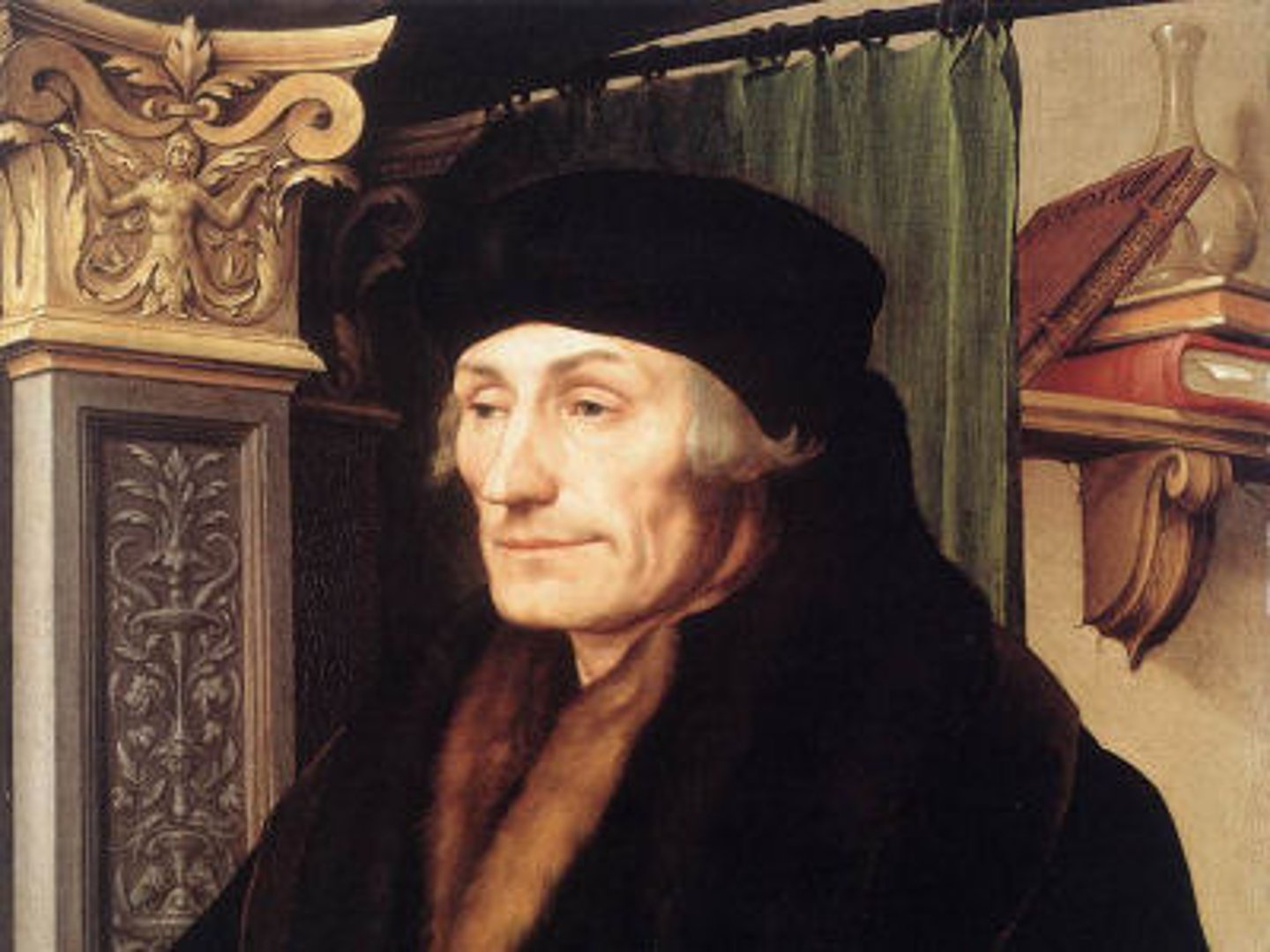
New Monarchs
Monarchs, who in the late 15 c. in Western Europe, began to centralize their own power by:
1. Providing guarantee of law and order.
2. Begin to refer to themselves as sovereign.
3. Competing with nobles for power by beginning to deconstruct feudal social structures.
4. Applying universal Roman Law across their countries (except England)
5. Established national identities
6. Developed early bureaucracies
7. Developed their own, 3rd party militaries
Examples of New Monarchs
England: Henry VII (Tudors)
Spain: Isabella I of Castile and Ferdinand of Aragon
France: Francis I (Valois)
Henry VII of England
Tudor who emerged victorious in the War of the Roses, strengthened the monarchy, and weakened the aristocrats (livery and maintenance).
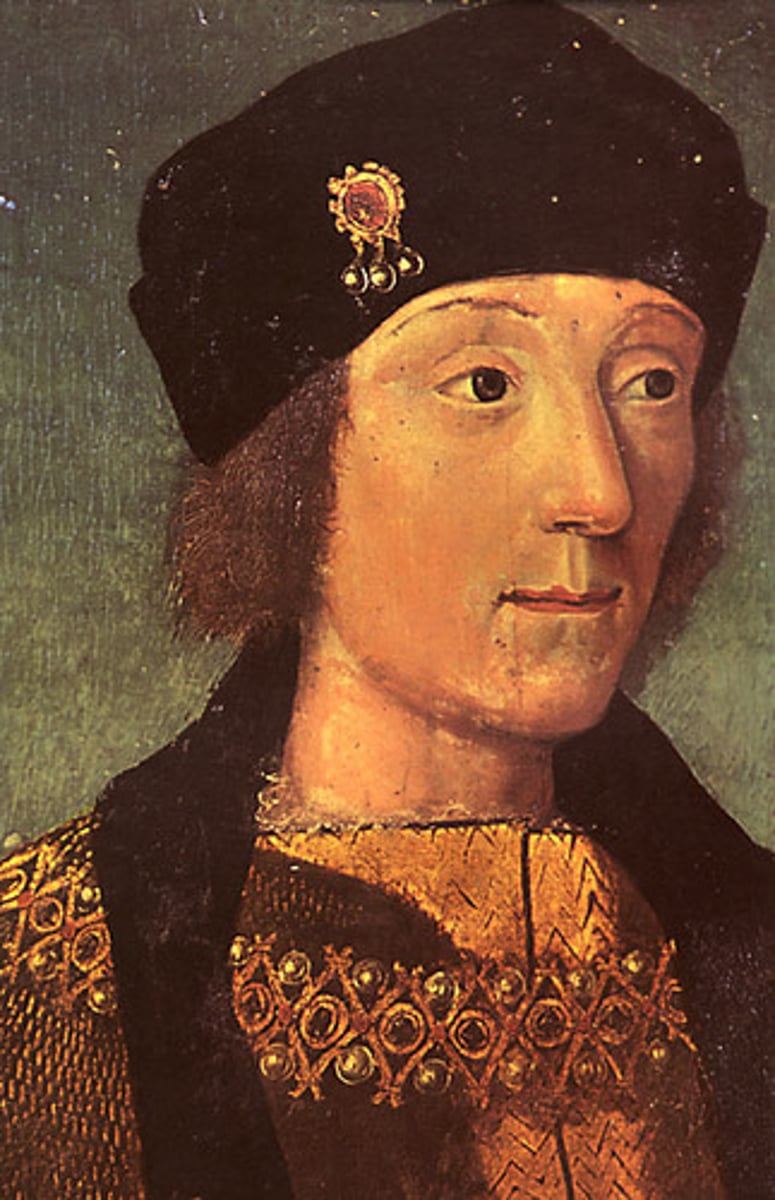
Star Chamber
A secret English court used to deal with aristocrats who threatened royal power. A royal court, established by Henry VII of England, for offending Nobility. It was conducted without a jury.
Isabella I of Castile
married Ferdinand of Aragon. Is one of the New Monarchs. She helped unite Spain, expel the Moors, fund the discovery of the New World and set up the Spanish Inquisition
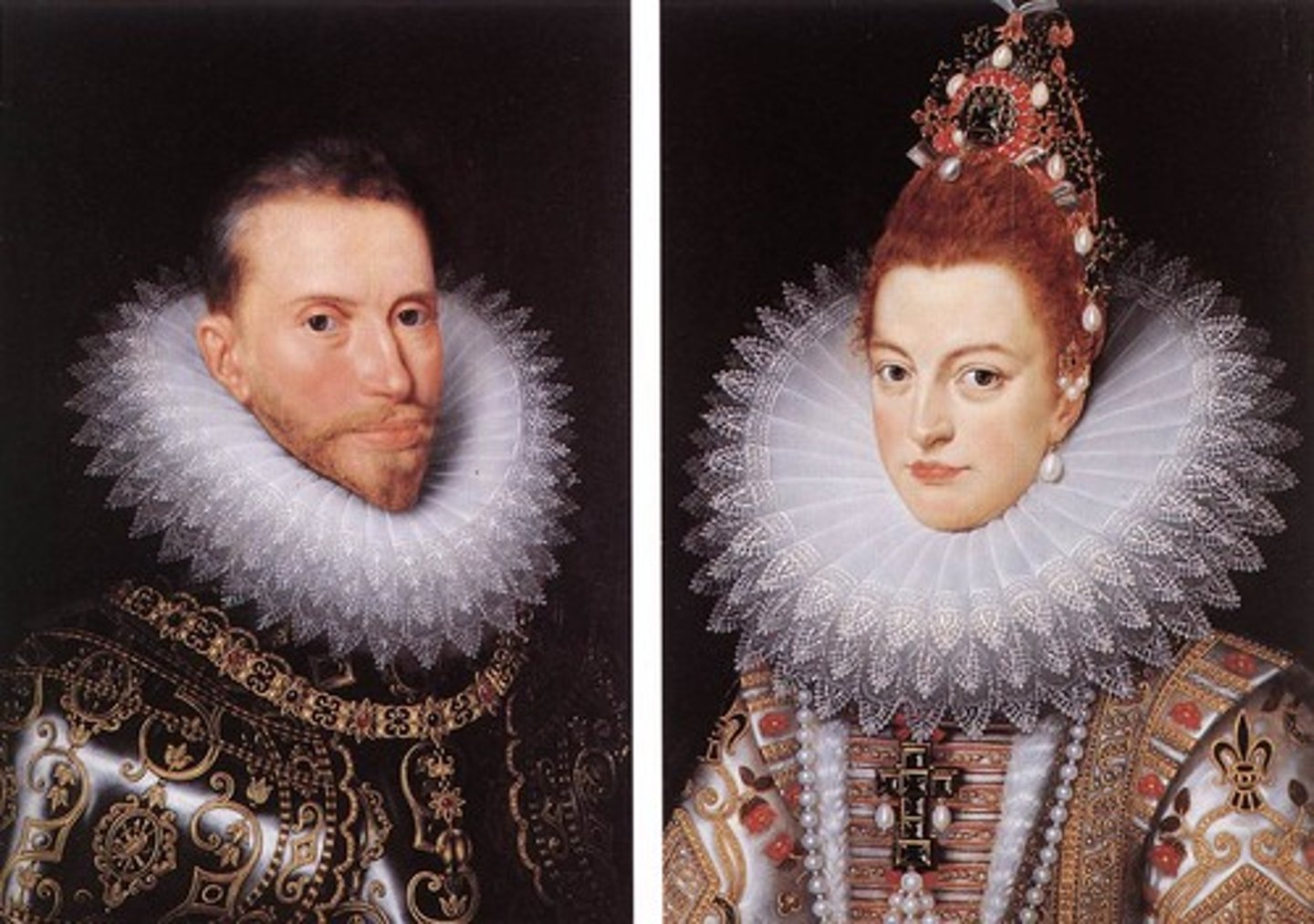
Gentry in England
A new class of landowners created by Henry VIII's Dissolution of the Monasteries.
Ferdinand of Aragon (1452-1516)
Spanish monarch who, along with his wife Isabella of Castile, who funded Christopher Columbus' voyage across the Atlantic in 1492, which led to his discovery of the West Indies.
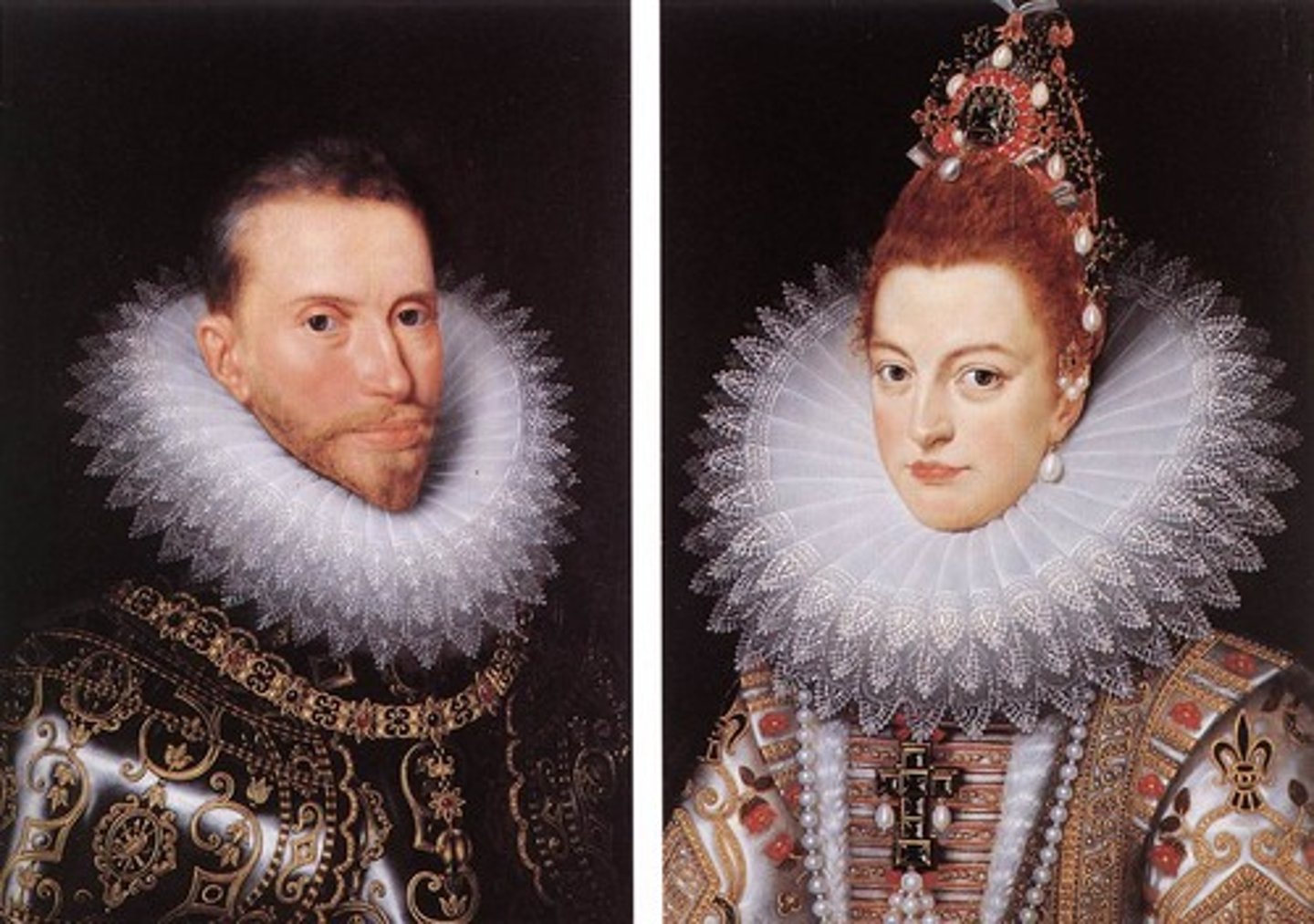
Nobles of the Robe (France)
Commercial and professional groups that increased in political significance: In France, newly wealthy and influential businessmen and professionals could actually buy their way into the nobility, which both revealed their increasing importance and the stubbornness of feudal social structures.
Francis I of France
New monarch. He reached an agreement with Pope Leo X known as the Concordat of Bologne, which authorized the king to nominate bishops, abbots, and other high official of the Catholic Church in France. This agreement gave the French monarch administrative control over the church so long as Francis I recognized the right of the Papacy over universal council. This meant that French kings had no reason to support a revolt against Rome
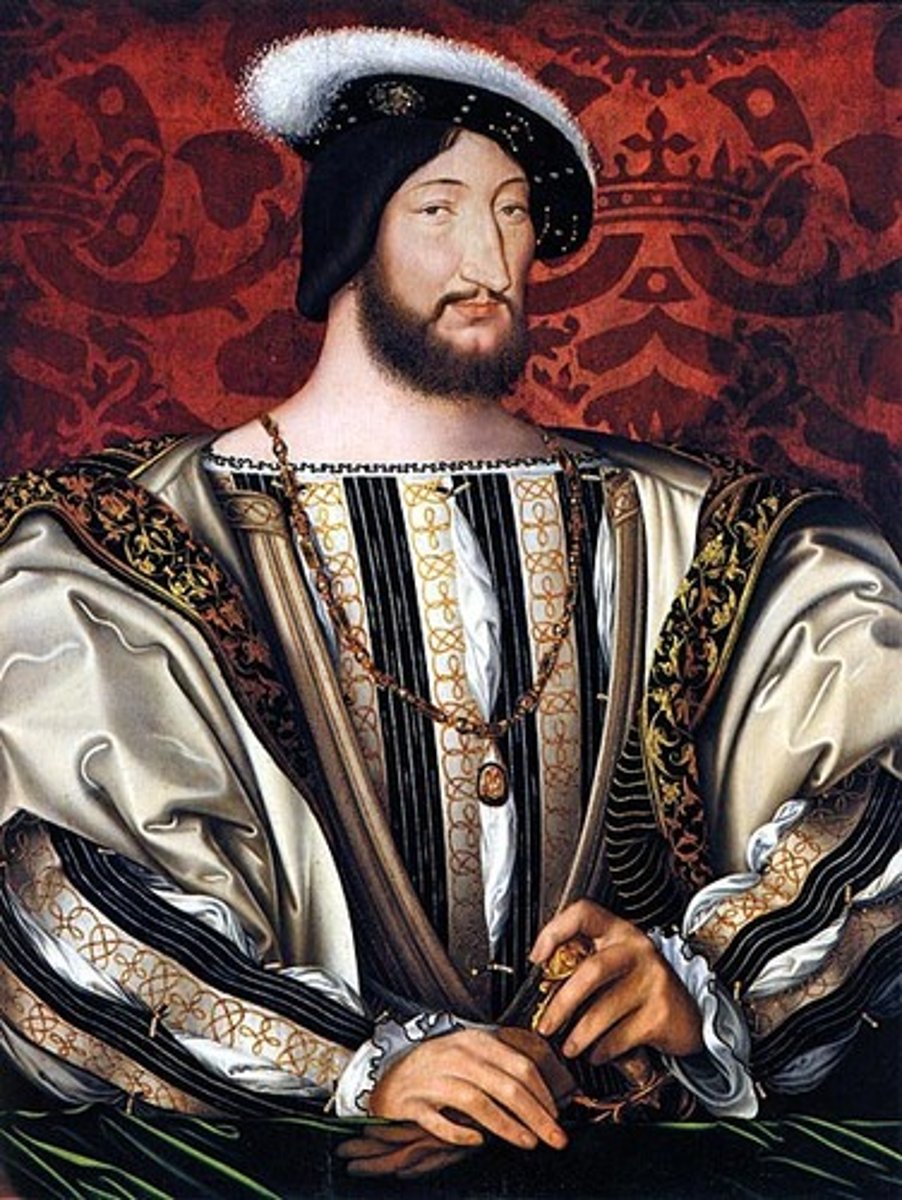
Bureaucracy
A large, complex organization composed of appointed officials. Allowed New Monarchs to rely less on Nobility and Clergy for daily running of government systems.
New Armies
After 1500 the kingdoms of Spain, France, England become more independent of the Church and powerful monarchs begin to consolidate their kingdoms into centralized, bureaucratic states, the nobility becomes subordinate to the monarch and the kings and queens of Europe are able to raise permanent standing armies, Europe beginning to move beyond age of feudal political structure.
Age of Exploration and Discovery
1400-1600, Europeans wanted greater access to spices and other products of Asia, wanted to find sea routes to Asia since land routes were controlled by the Ottoman Empire, improvements in navigational technology made long sea voyages possible, compass, astrolabe, cartography, lateen sail.
Christopher Columbus (1451-1506)
Genoese explorer who stumbled upon the West Indies in 1492 while in search of a new water route to Asia (as sponsored by Spain's Isabella and Ferdinand). Columbus made three subsequent voyages across the Atlantic and briefly served as a colonial administrator on the island of Hispaniola, present day Haiti.
Caravel Ship
A small, maneuverable, three-mast sailing ship developed by the Portuguese in the 15th c. that gave the Portuguese a distinct advantage in exploration and trade.
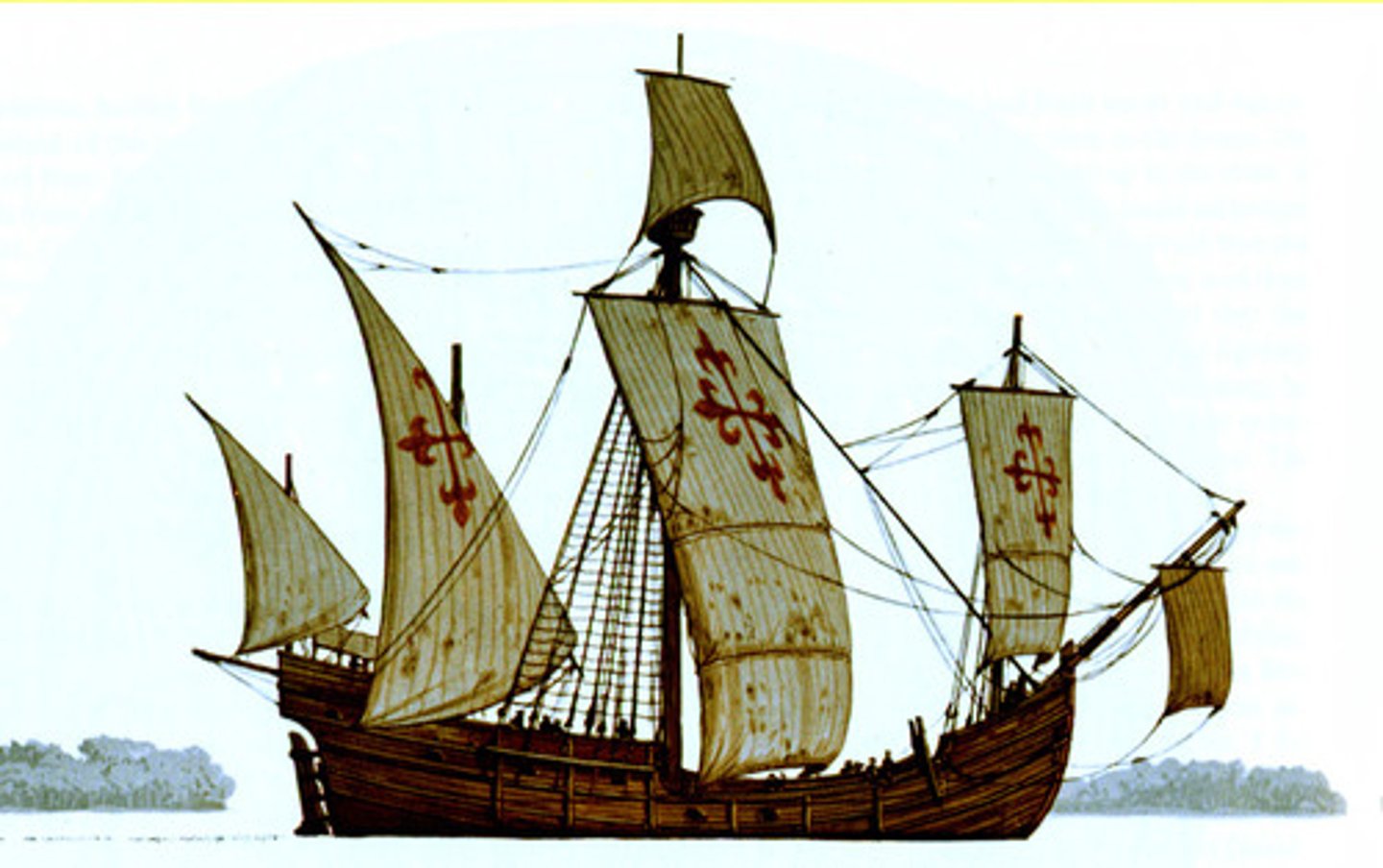
Conquistador
Spanish for "conqueror"; Spanish soldier who participated in conquest of indigenous peoples of Latin America.
Gold, God, Glory
As reasons for exploration, to get rich, establish missions, and gain fame back home
Missionaries
A person sent on a religious mission, especially one sent to promote Christianity in a foreign country. Jesuits would play a strong role in the process, along with Dominican Friars
Treaty of Tordesillas (1494)
An agreement between Portugal and Spain which declared that newly discovered lands to the west of an imaginary line in the Atlantic Ocean would belong to Spain and newly discovered lands to the east of the line would belong to Portugal.
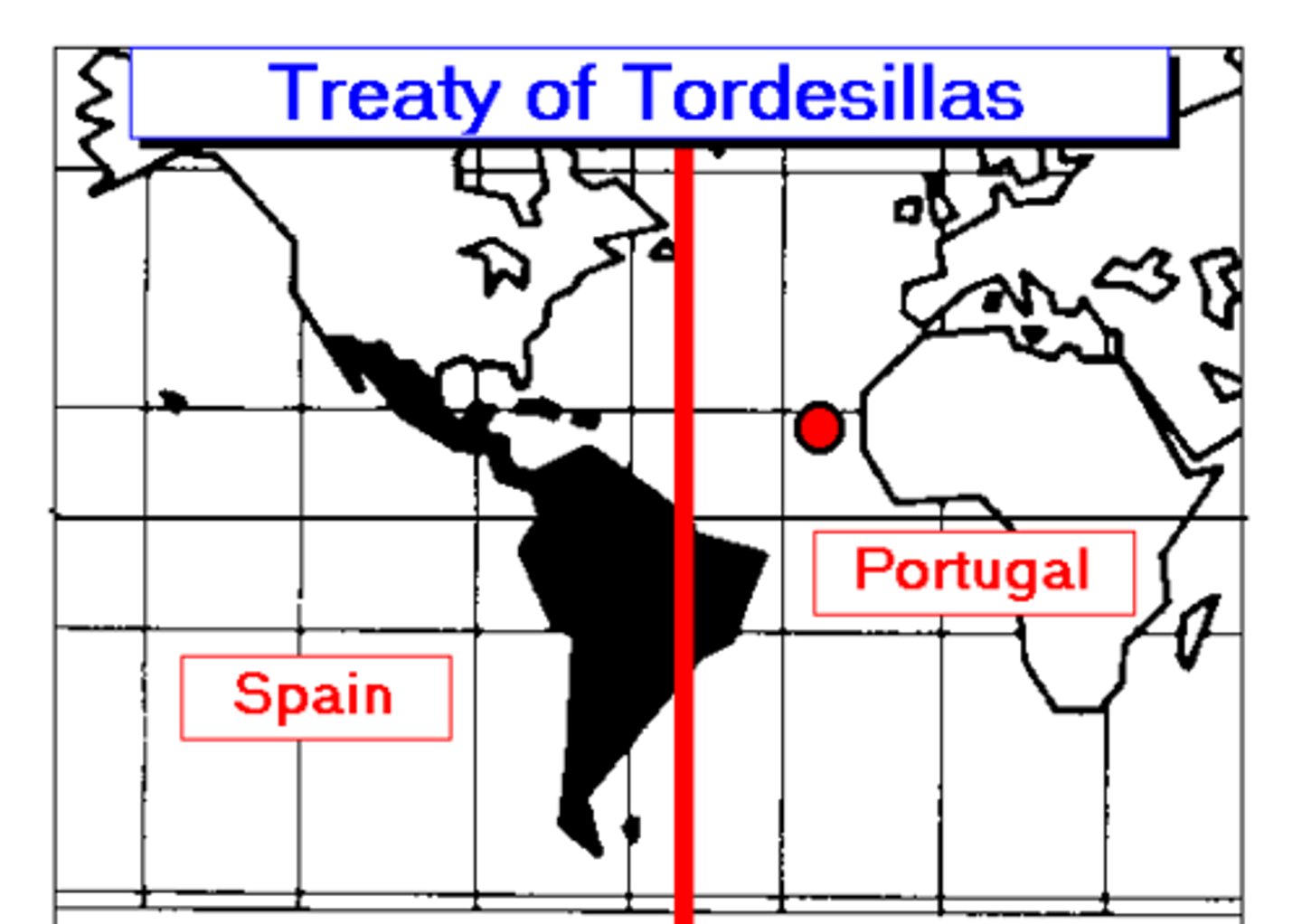
Henry the Navigator (1394-1460)
Portuguese prince who promoted the study of navigation and directed voyages of exploration down the western coast of Africa.
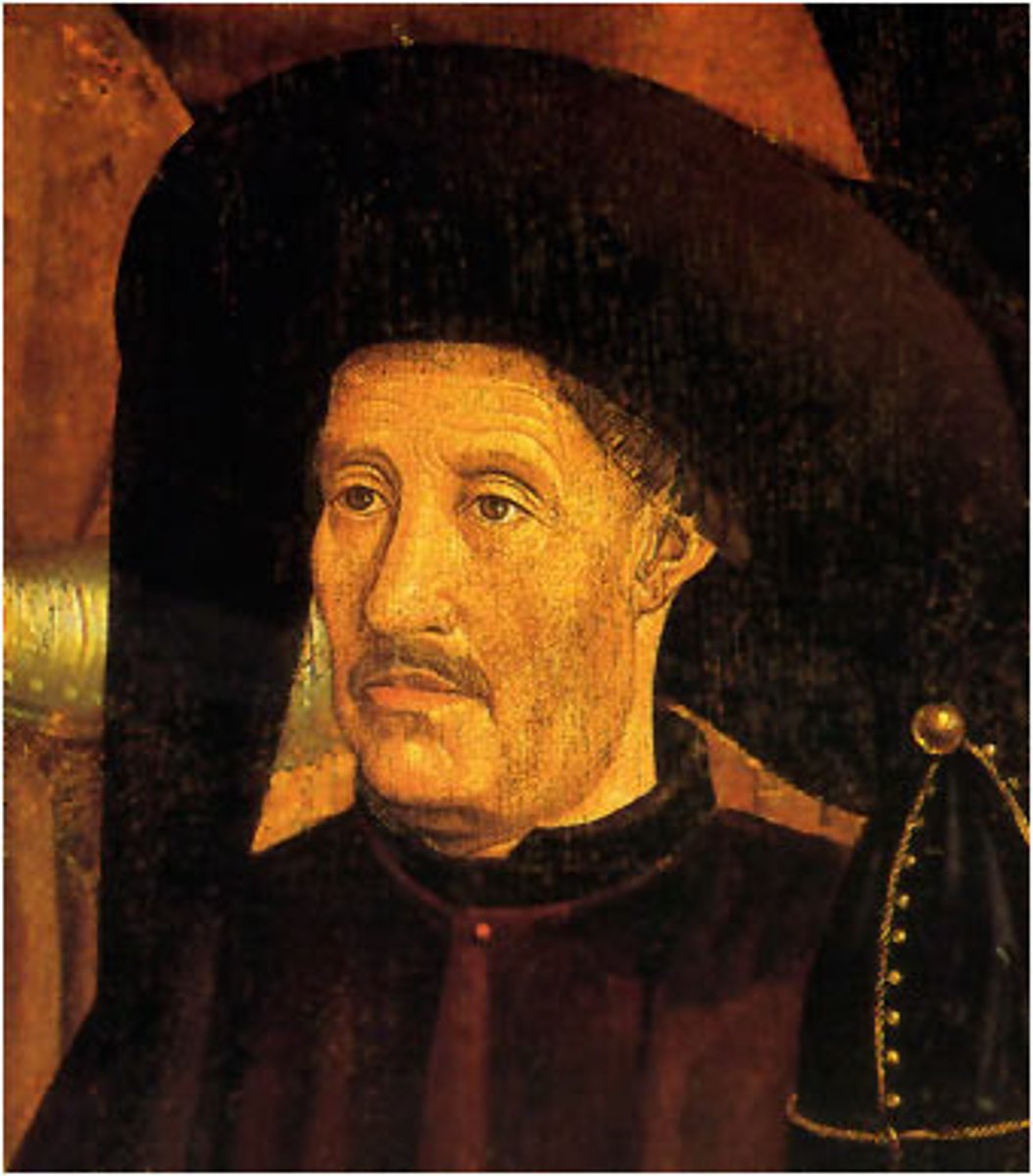
Aztec Empire
A large and complex Native American civilization in modern Mexico and Central America that possessed advanced mathematical, astronomical, and engineering technology.
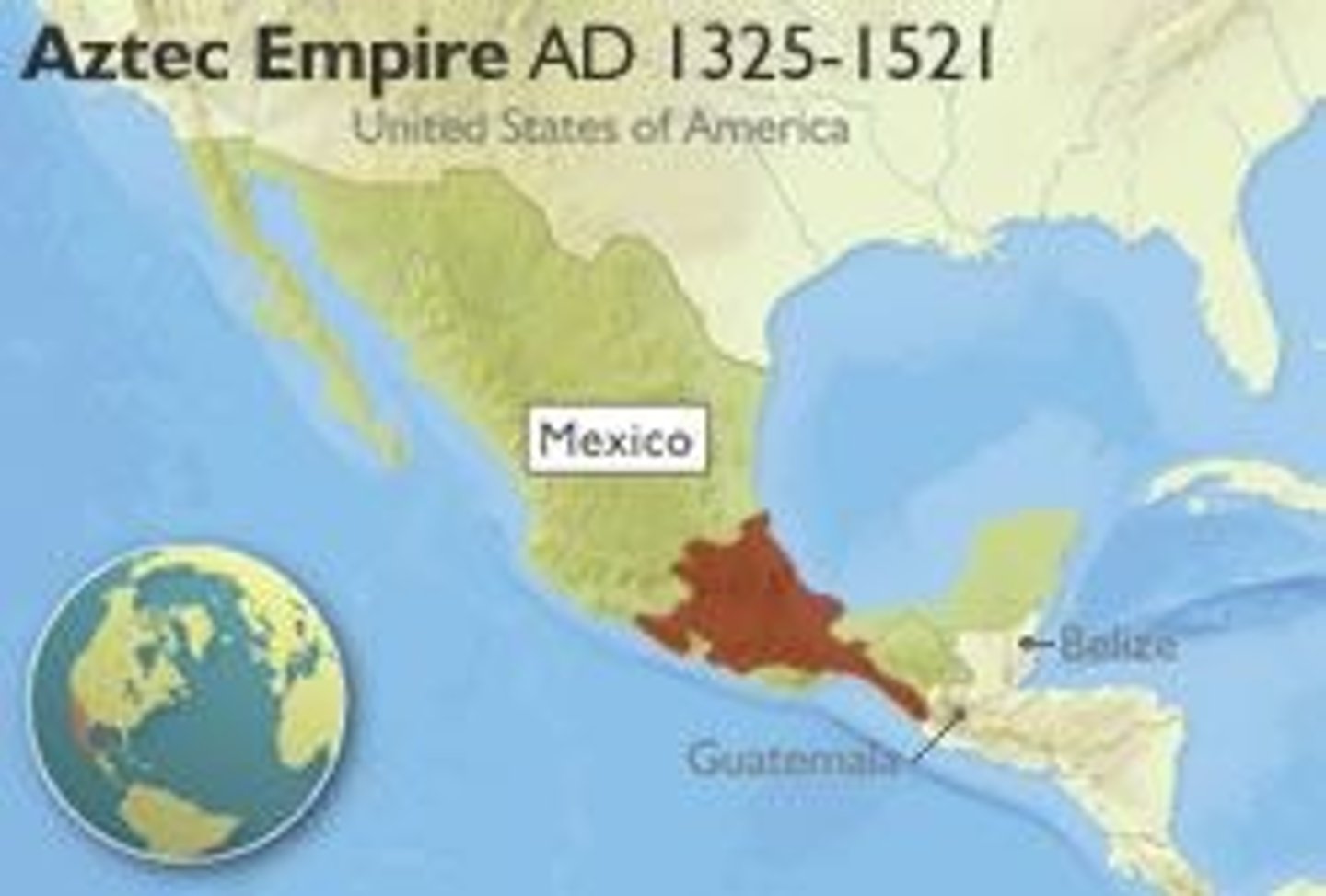
Inca Empire
The vast and sophisticated Peruvian empire centered at the capital city of Cuzco that was at its peak from 1438 until 1532.
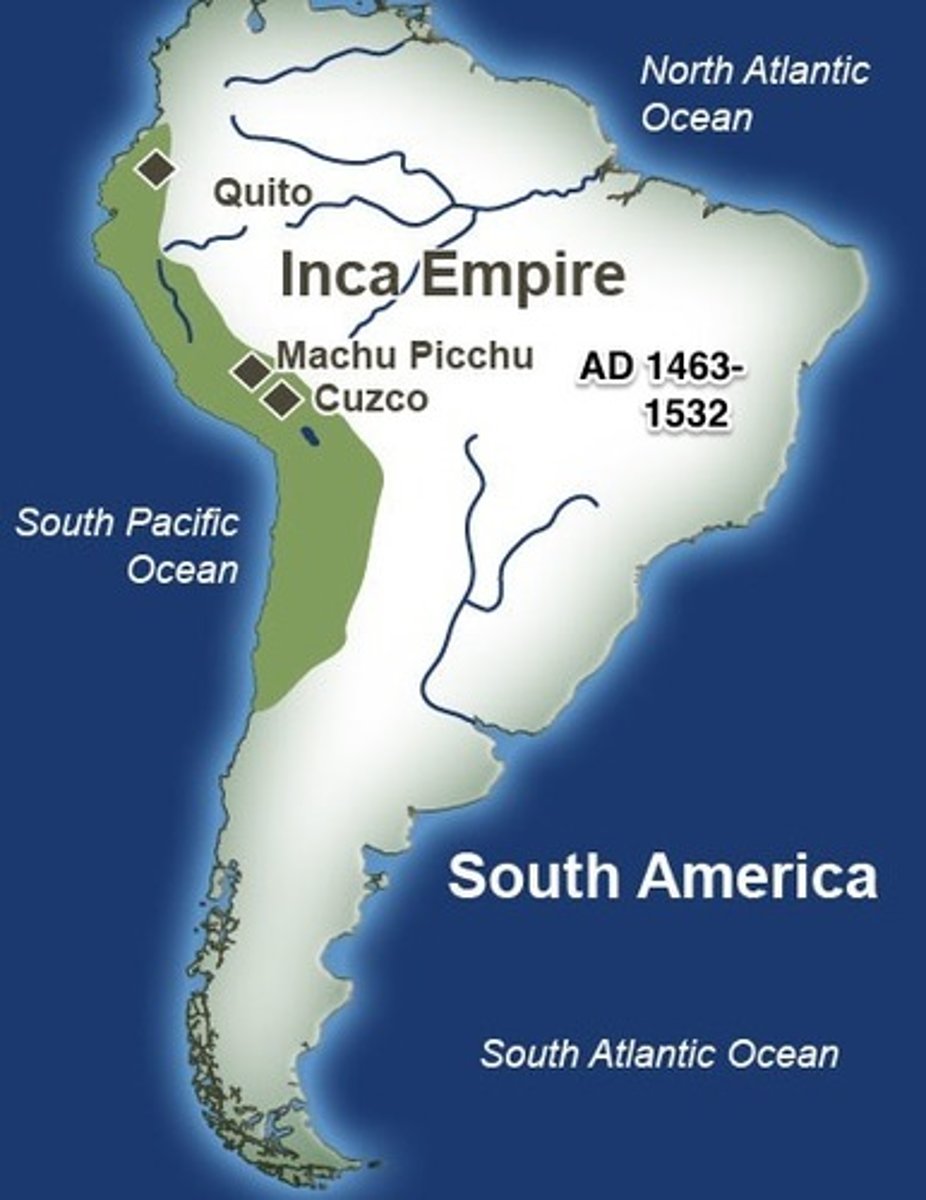
Viceroyalities
The name for the four administrative units of Spanish possessions in the Americas: New Spain, Peru, New Granada, and La Plata.
Encomienda System
A system whereby the Spanish crown granted the conquerors the right to forcibly employ groups of Indians; it was a disguised form of slavery.
Columbian Exchange
The exchange of plants, animals, diseases, and technologies between the Americas and the rest of the world following Columbus's voyages.
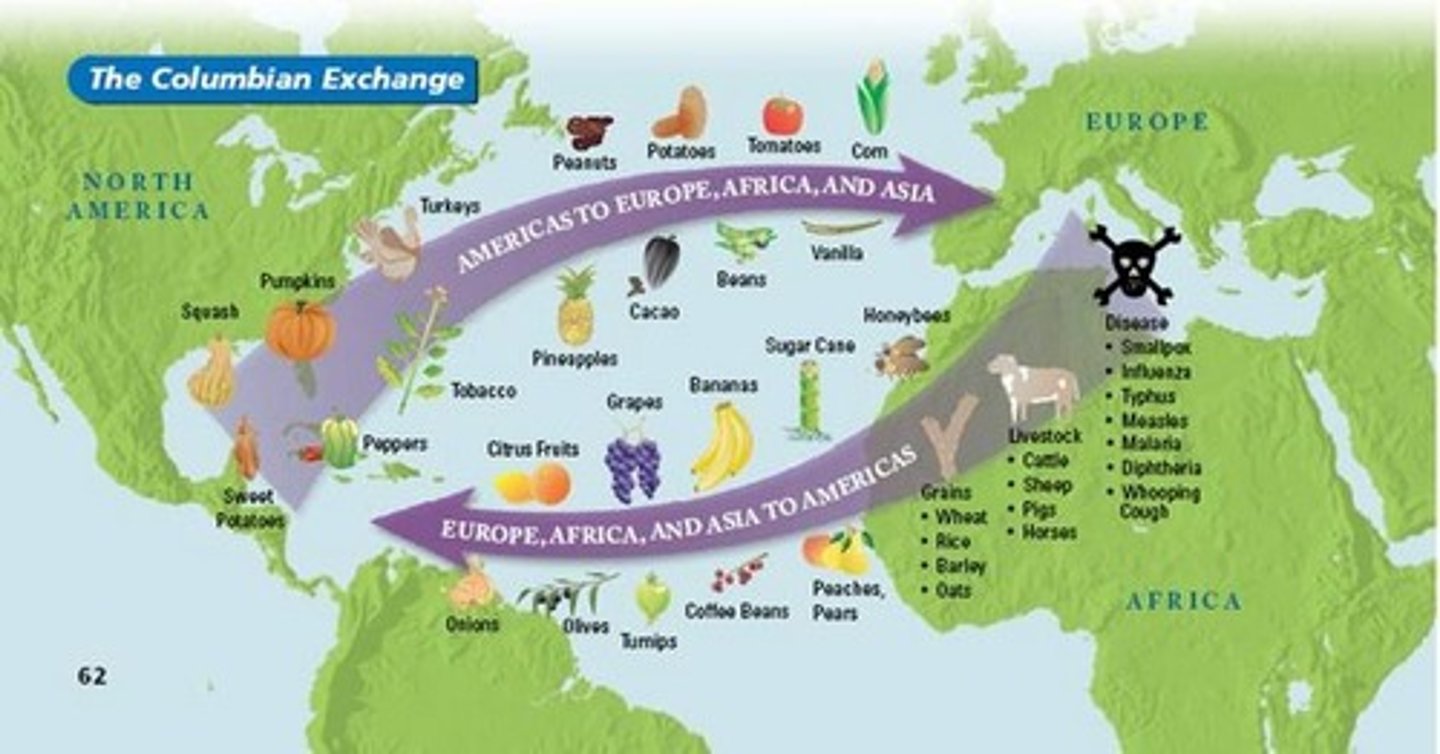
Smallpox
A highly contagious viral disease characterized by fever, weakness, and skin eruption with pustules that form scabs; responsible for killing Native Americans with the rise of European exploration and the Columbian Exchange.
Ferdinand Magellan (1480-1521)
Portuguese navigator who led the Spanish expedition of 1519-1522 that was the first to sail around the world.
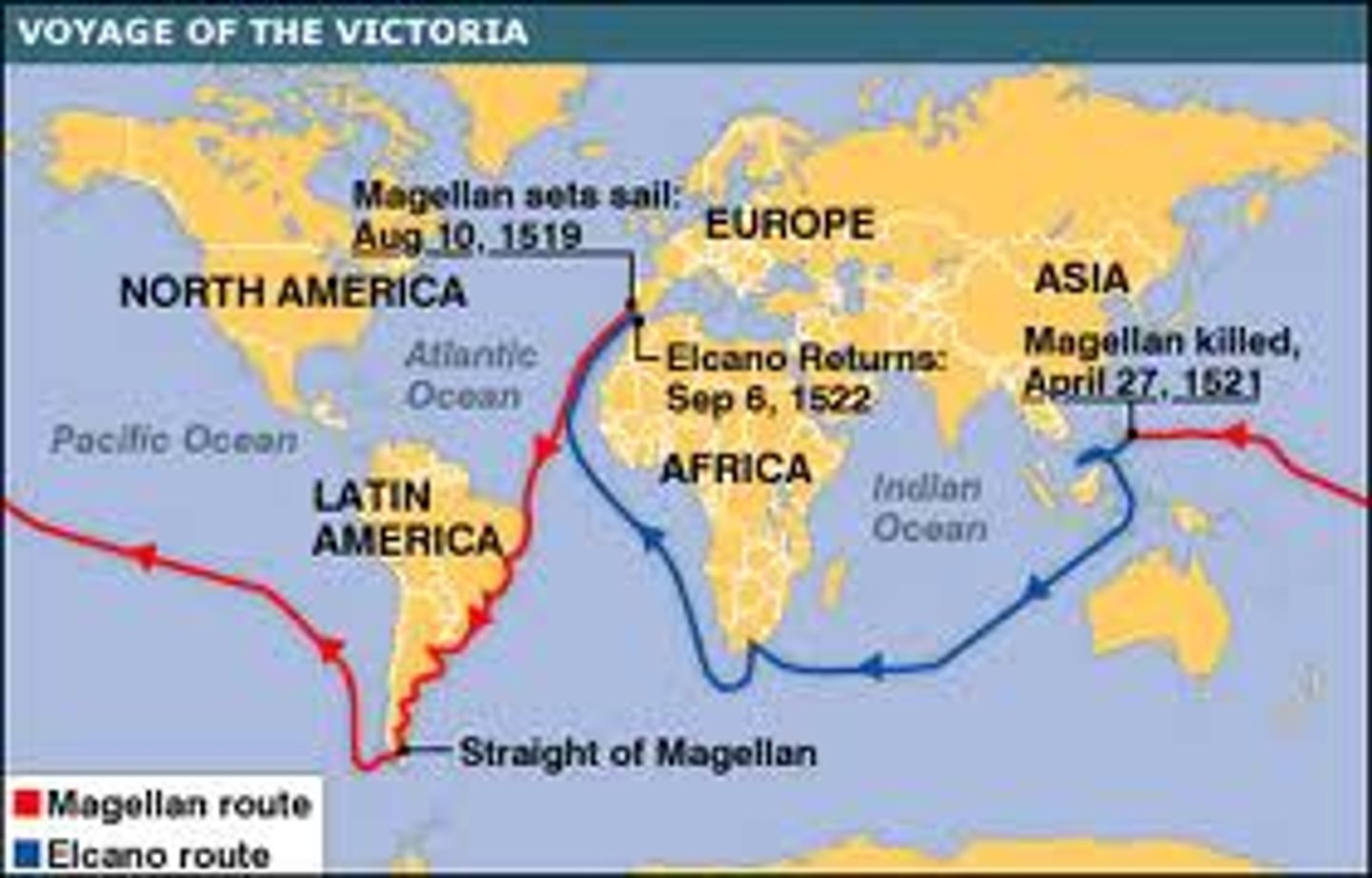
Potosi Silver Mine
A silver mine in the interior of South America; great silver mountain that would bring Spanish wealth and help lead the the first universal currency (silver Spanish coinage).
Trianglular Trade
A pattern of trade that connected Europe, Africa, Asia, and the American continents.
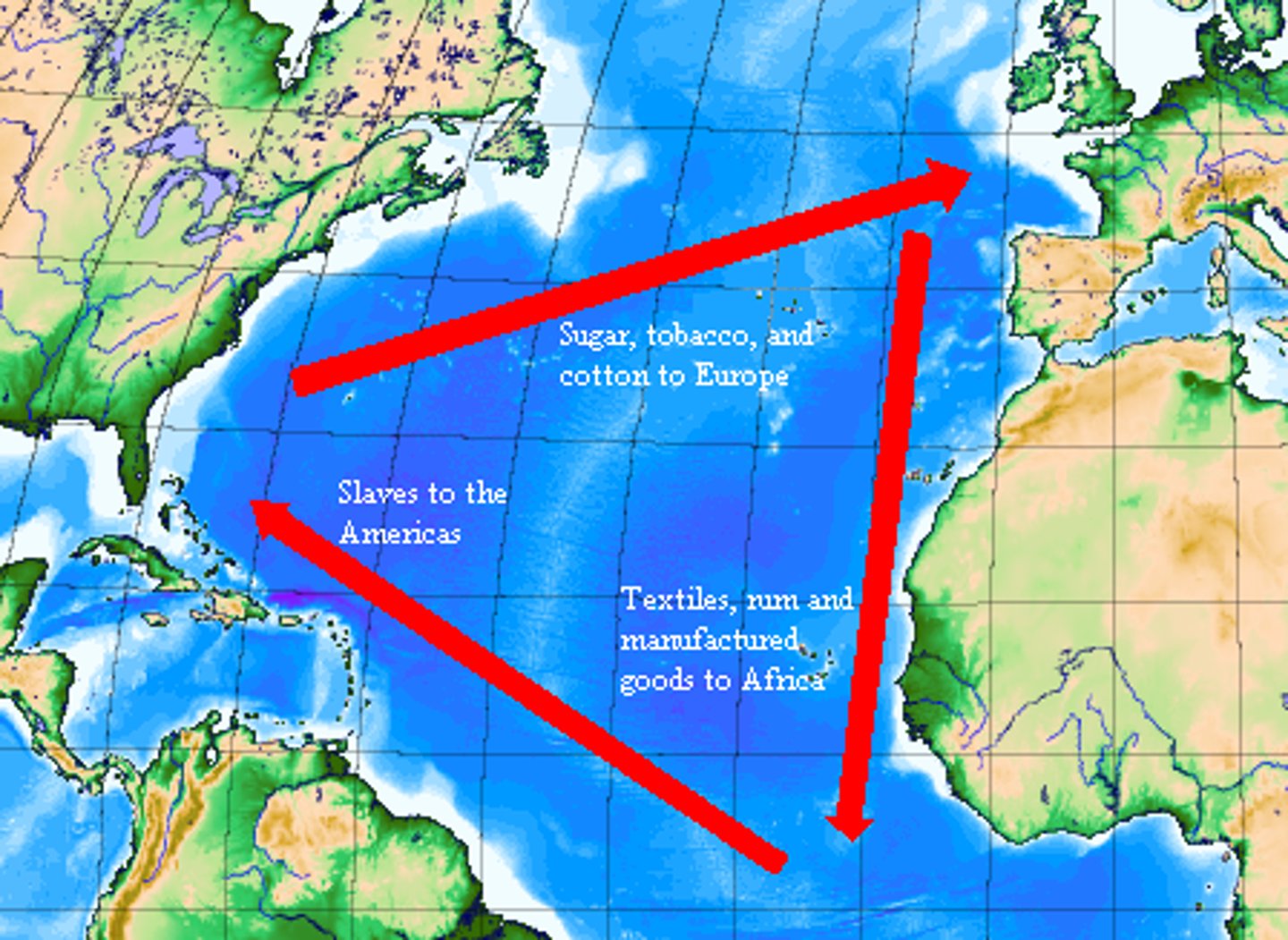
Atlantic Slave Trade
Lasted from 16th century until the 19th century. Trade of African peoples from Western Africa to the Americas. One part of a three-part economical system known as the Middle Passage of the Triangular Trade.
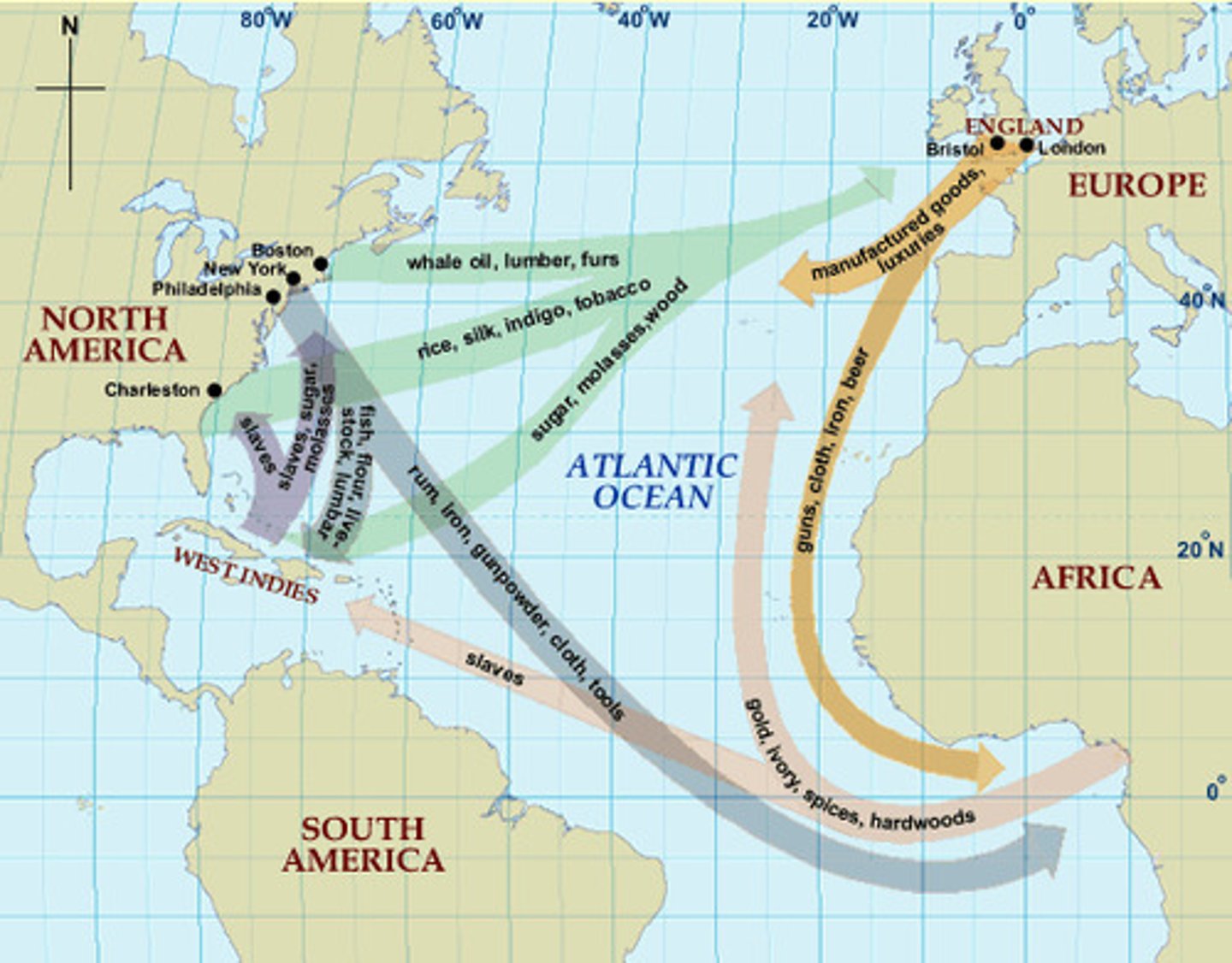
Plantation Economies
Economic system stretching between the Chesapeake Bay and Brazil that produced crops, especially sugar, cotton, and tobacco, using slave labor on large estates.
Slave Labor
Labor that is coerced and inadequately rewarded, or the people who perform such labor
Bartolome de Las Casas
First bishop of Chiapas, in southern Mexico. He devoted most of his life to protecting Amerindian peoples from exploitation. His major achievement was the New Laws of 1542, which limited the ability of Spanish settlers to compel Amerindians to labor.
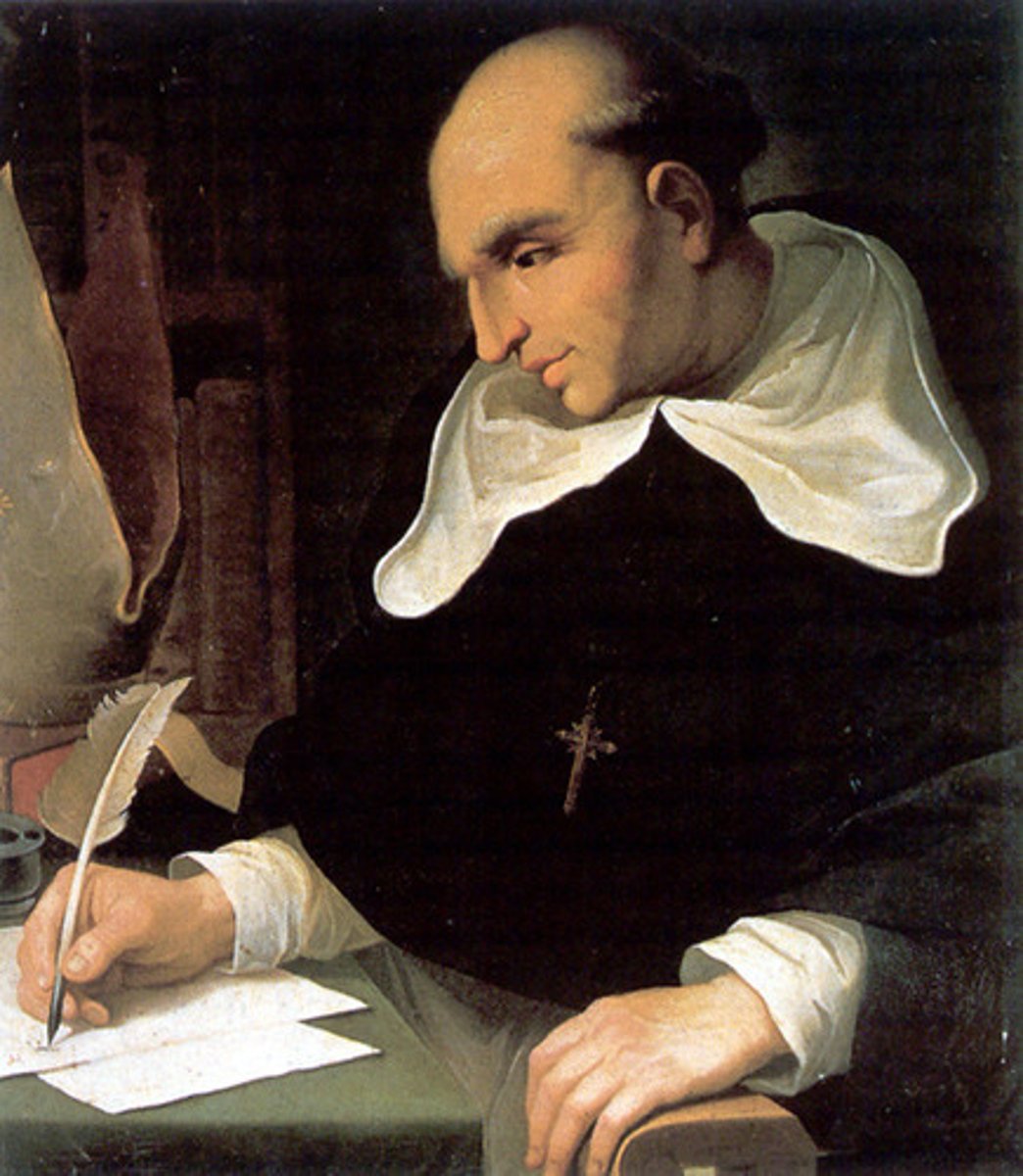
Amerigo Vespucci (1454-1512)
He was the Florentine navigator that discovered the coast of modern-day Venezuela. In a letter titled Mundus Novus (The New World), he described America as a continent separate from Asia. In recognition of Amerigo's bold claim, the continent was named for him.
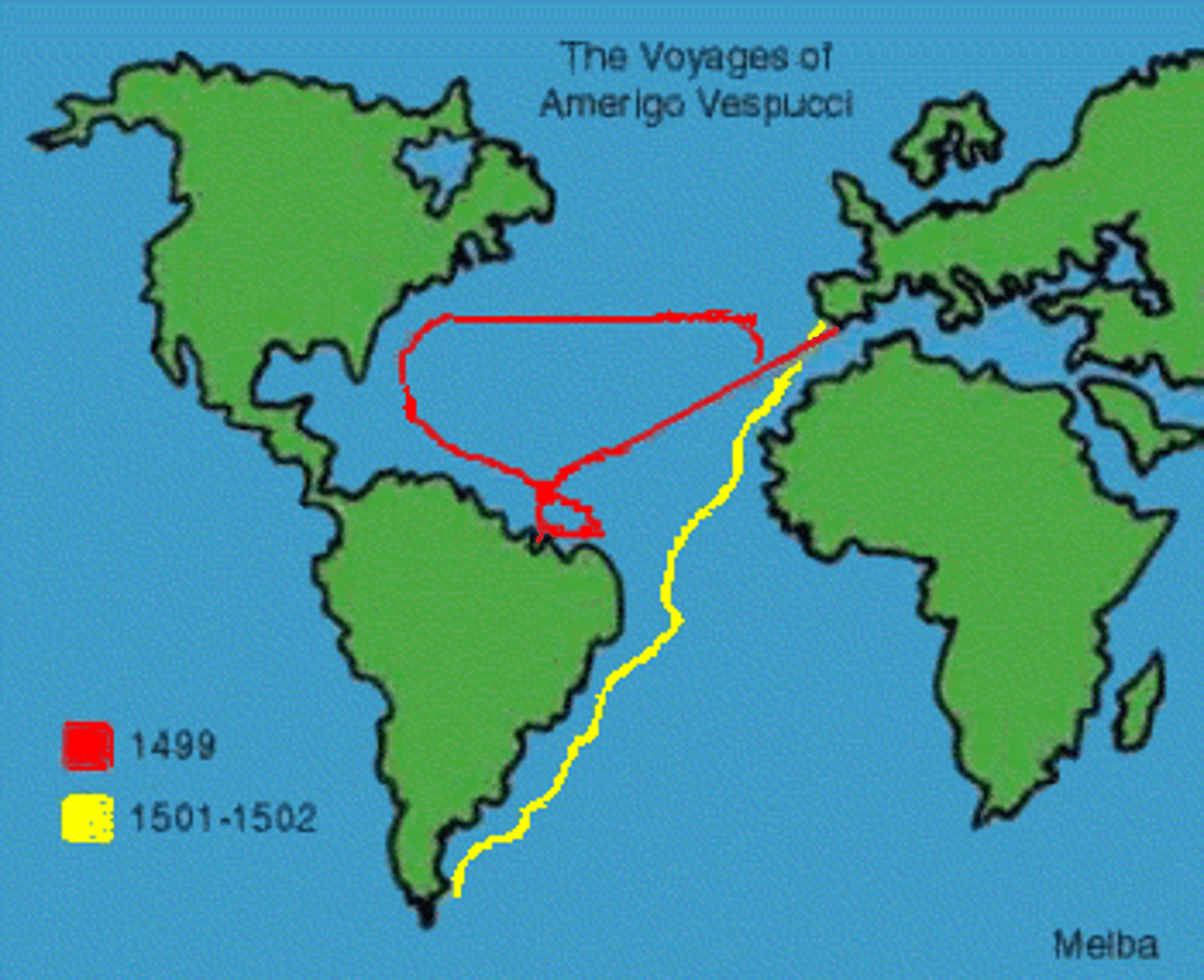
Hernan Cortes (1485-1547)
Spanish Conquistador who defeated the Aztec Empire and claimed Mexico for Spain.
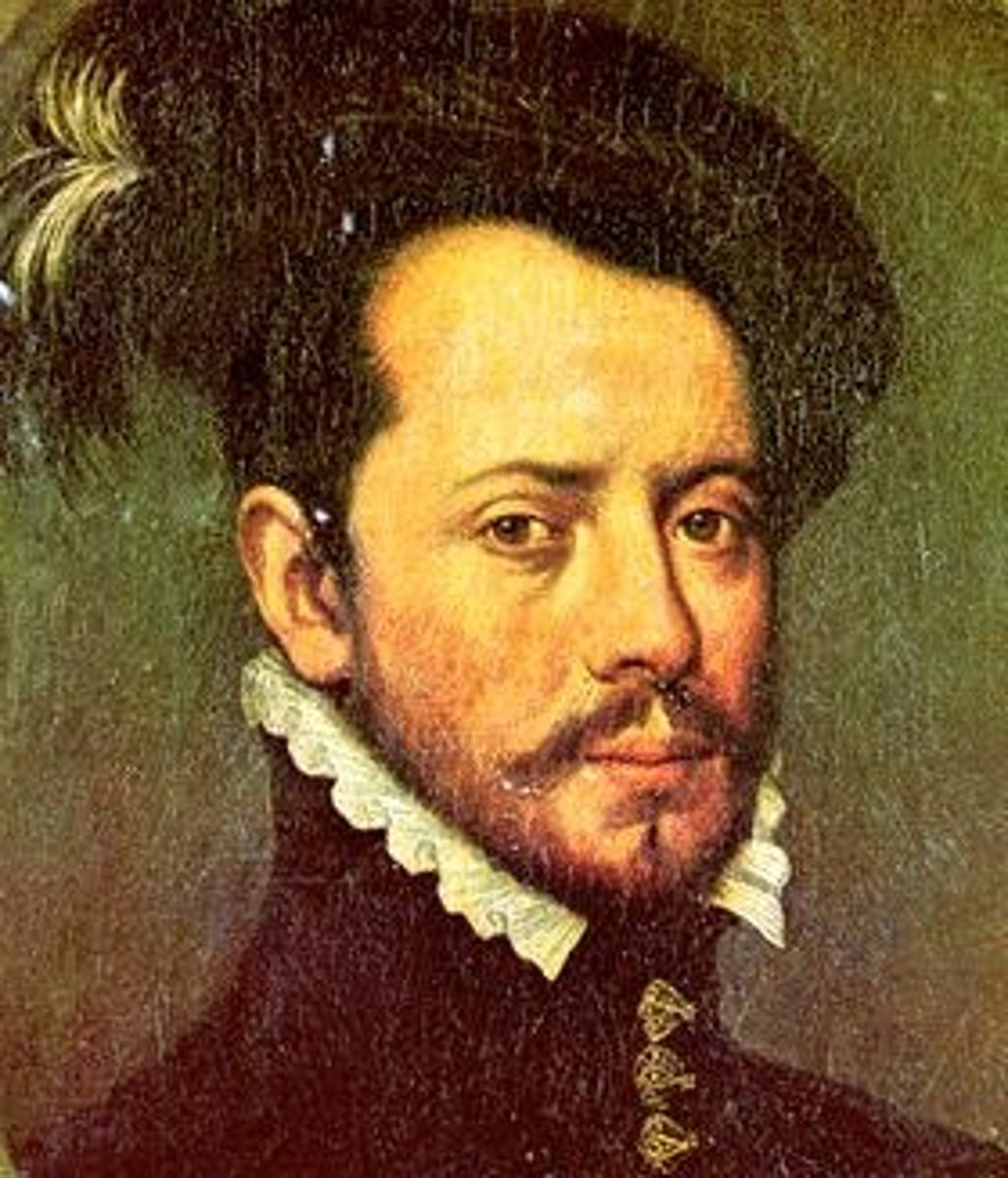
Bank of Amsterdam (1609)
First bank to not only received deposits of gold and silver and exchanged foreign currencies, it made loans.
double-entry bookkeeping
Bookkeepers record all transactions in two places so they can check one list of transactions against the other for accuracy. Revolutionized economic practices in the 1600s.
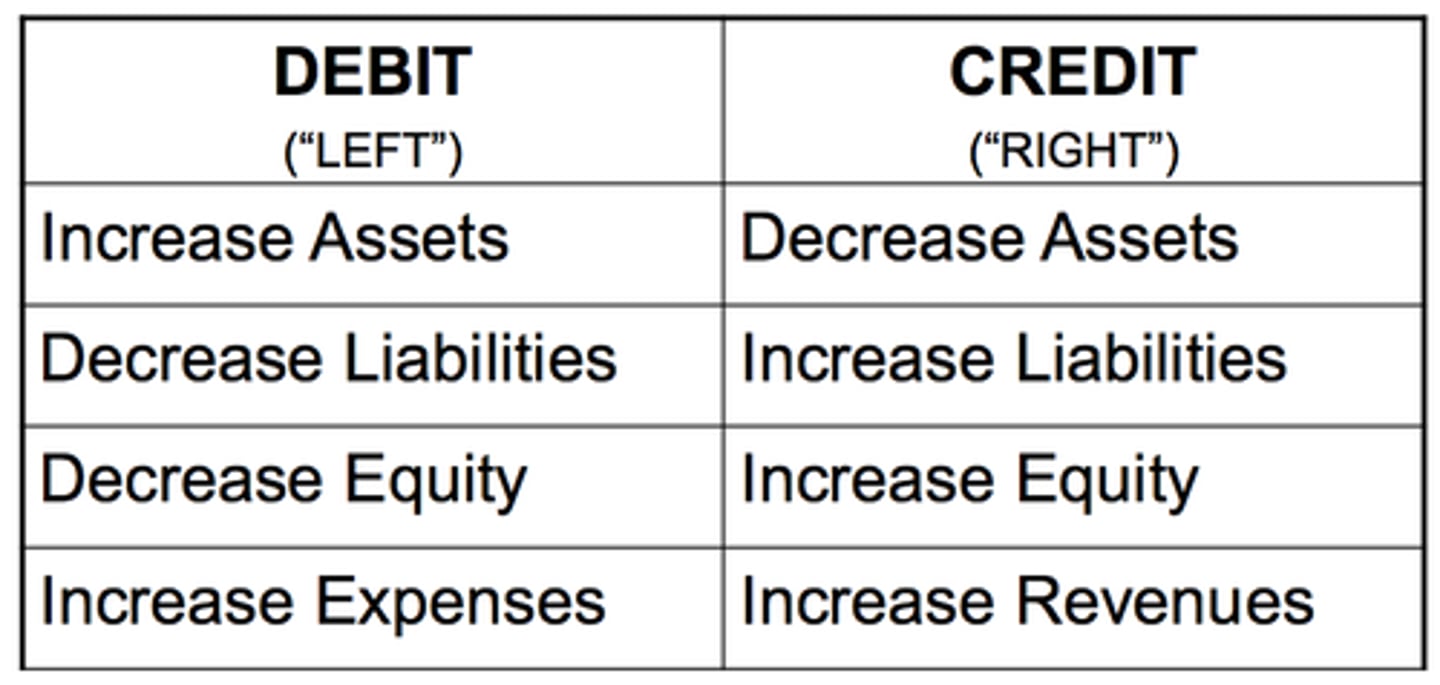
Market Economies
Individuals make their own decisions about what to produce, how to produce it, and for whom to produce it.
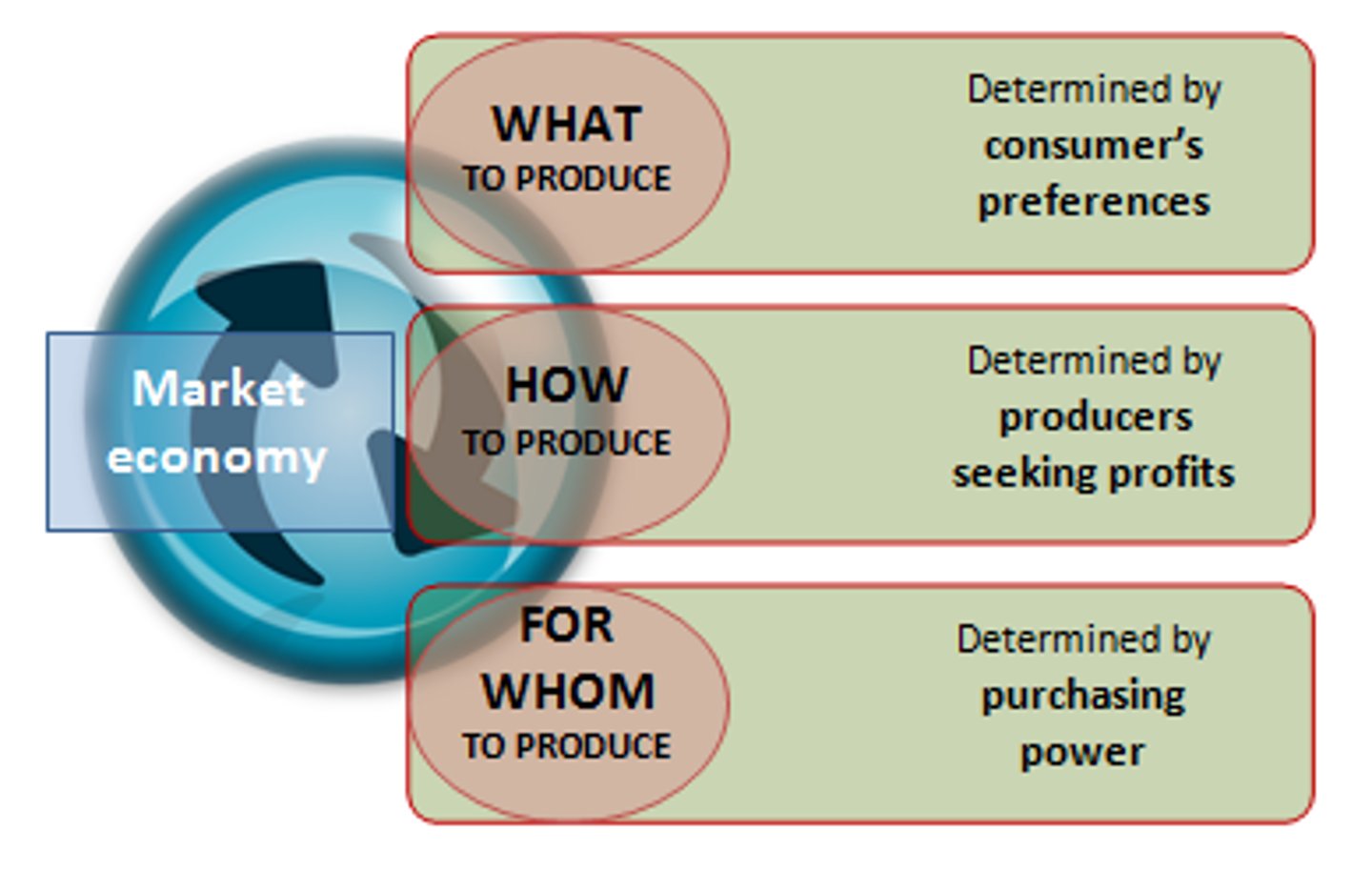
Bank of England (1694)
Unlike the French bank, endured; enabled the government to raise money at low interest for foreign wars; by the 1740s, the government could borrow more than four times what it could in the 1690s.
Price Revolution
The period in European history during the 1500s when inflation rose rapidly due to an influx of gold and silver within the markets.
Dutch East India Company
A company founded by the Dutch in the early 17th century to establish and direct trade throughout Asia. Richer and more powerful than England's company, they drove out the English and Established dominance over the region. It ended up going bankrupt and being bought out by the British
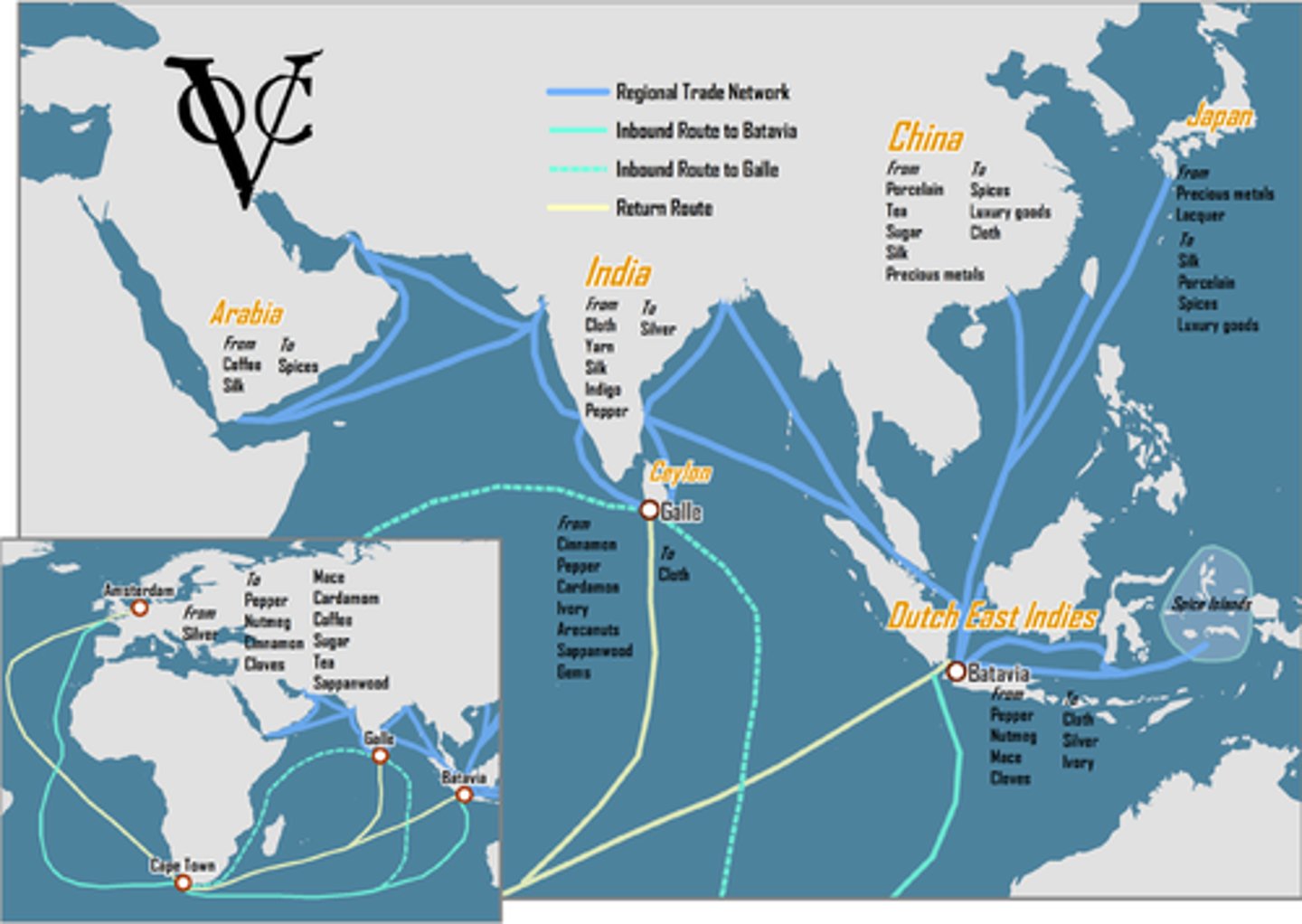
British East India Company
A joint stock company that controlled most of India during the period of imperialism. This company controlled the political, social, and economic life in India for more than 200 years.
Merchant Class
A rise of wealthy merchants and tradesmen who helped spur the development of a more independent middle class within European society.
Commercial Revolution
A dramatic change in the economy of Europe at the end of the Middle Ages. It is characterized by an increase in towns and trade, the use of banks and credit, and the establishment of guilds to regulate quality and price.
